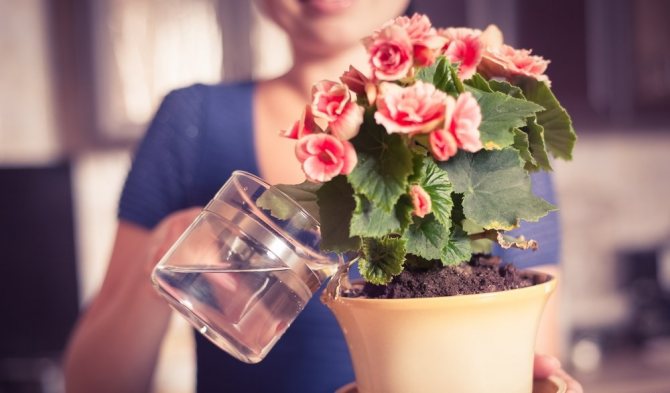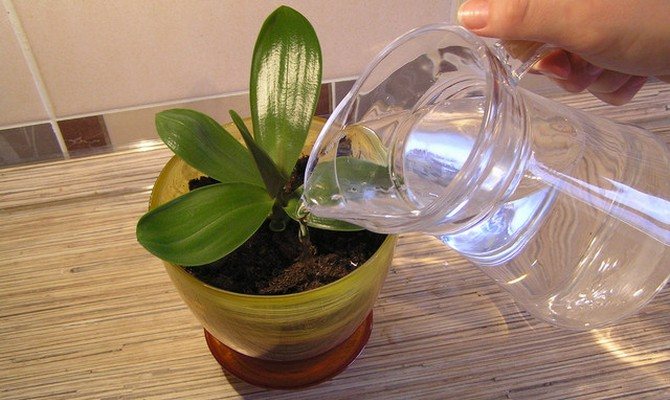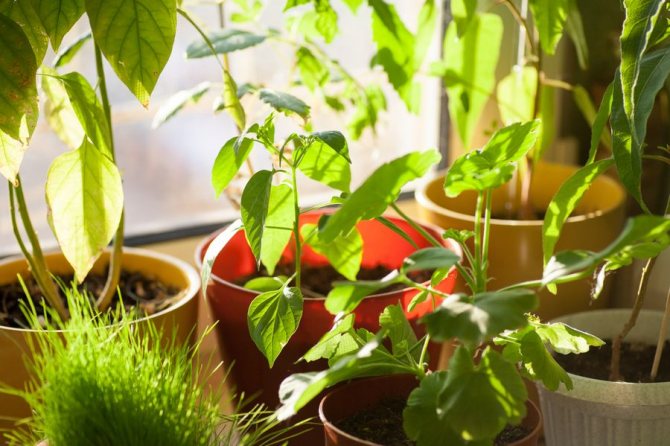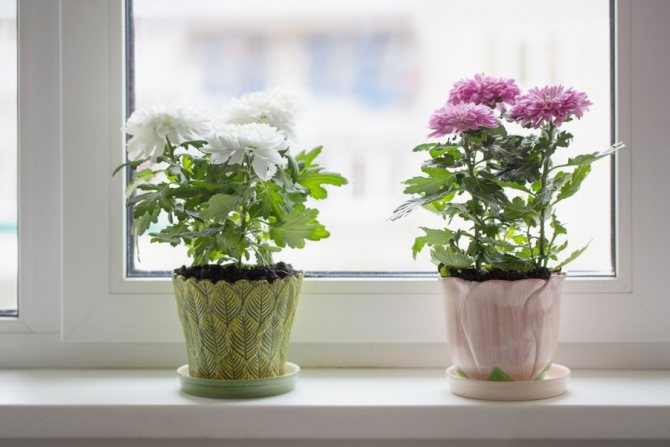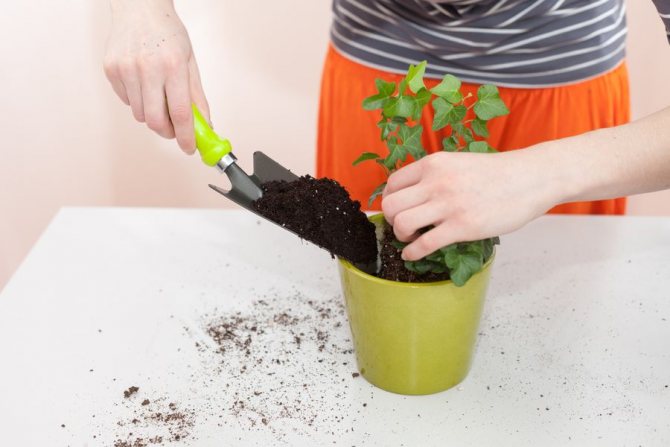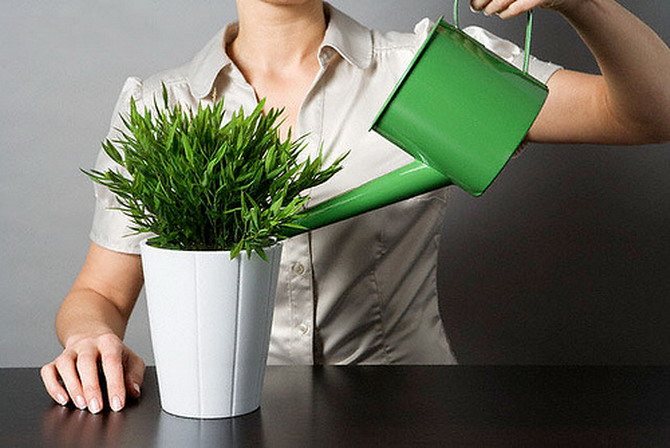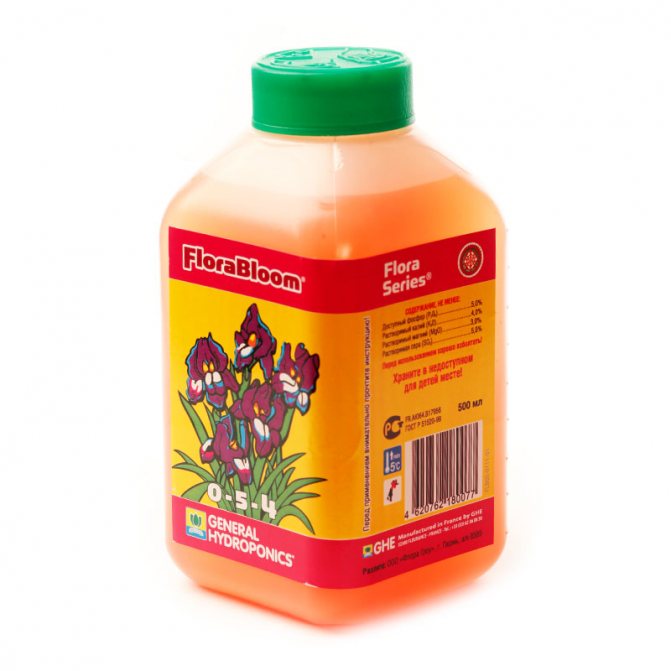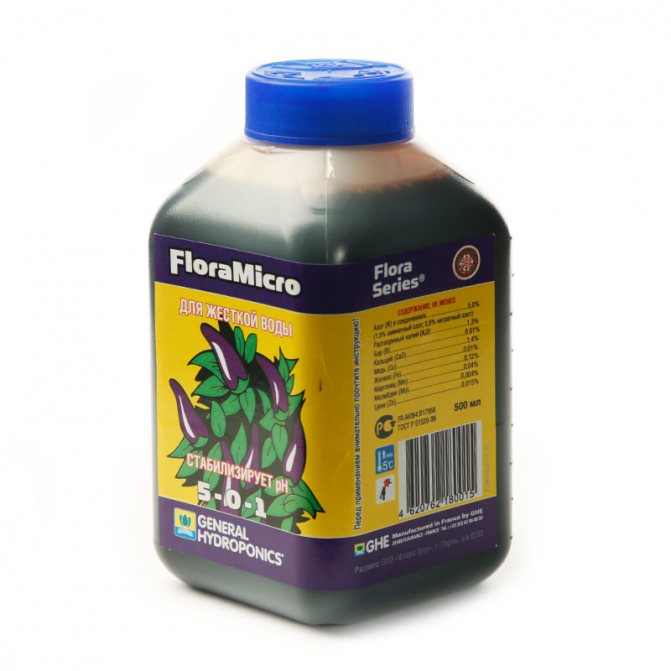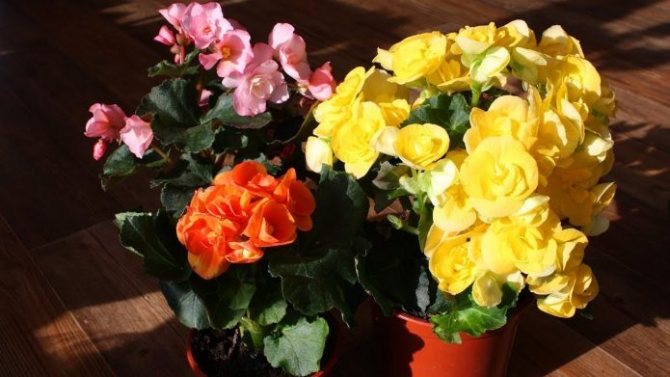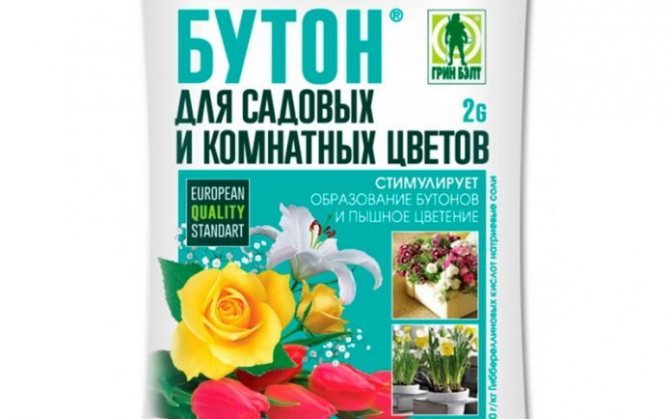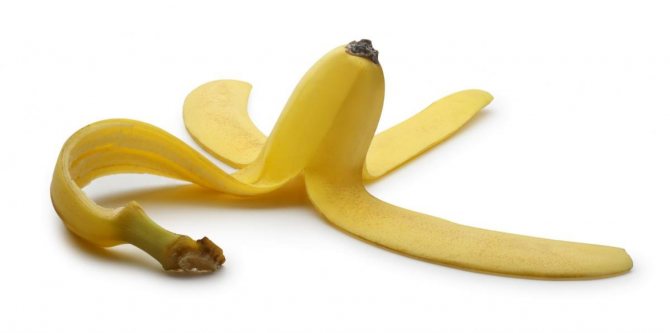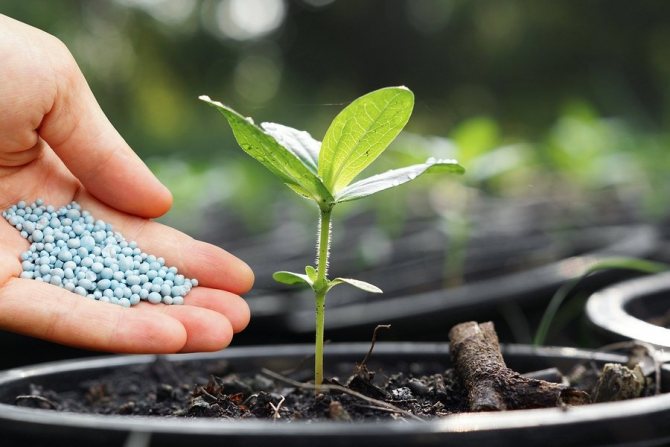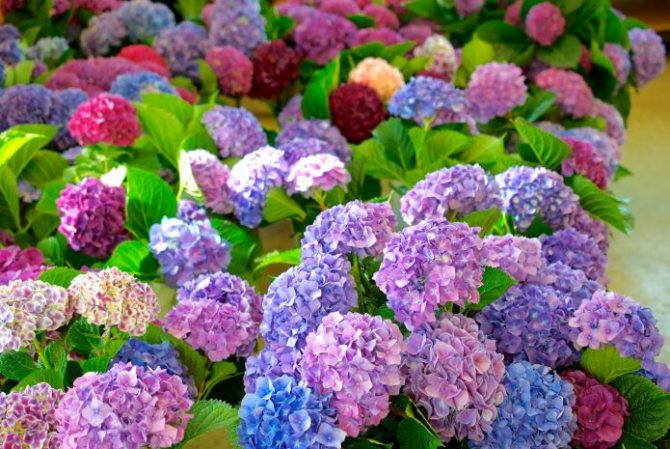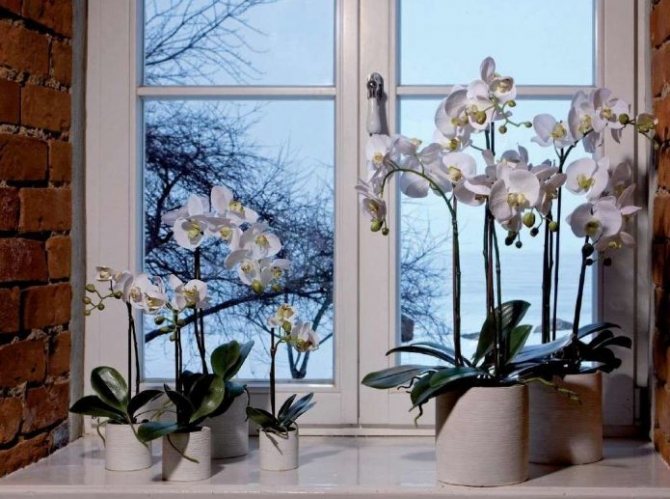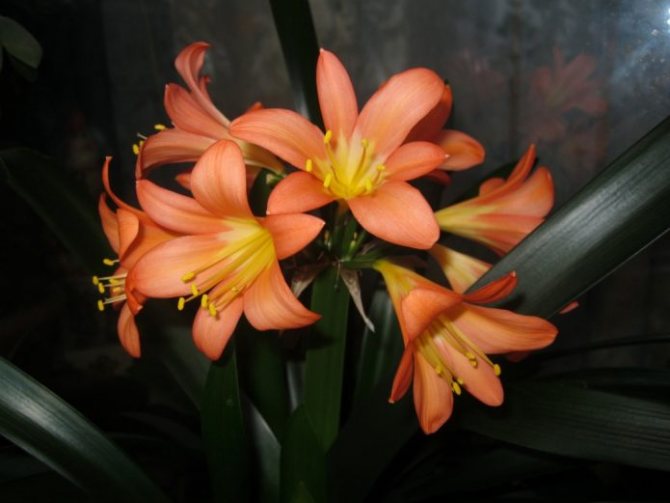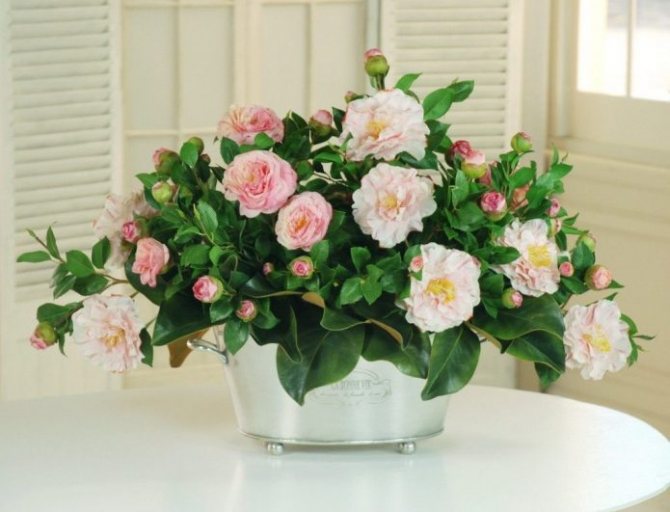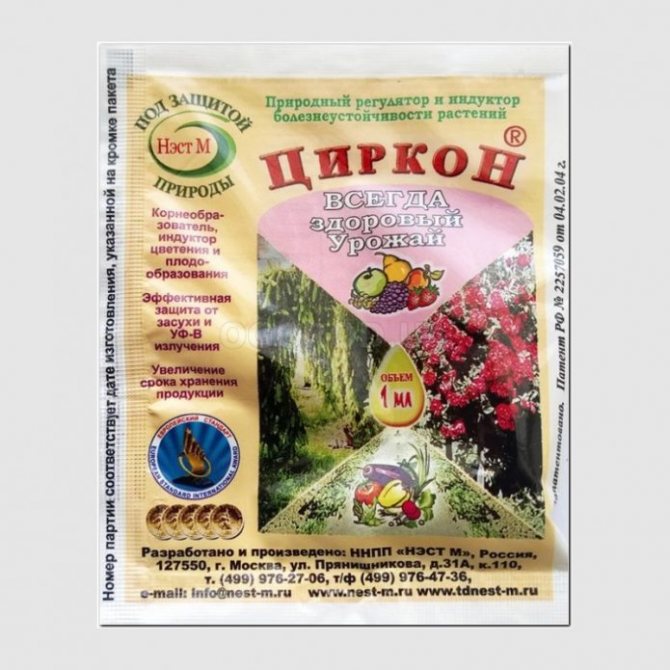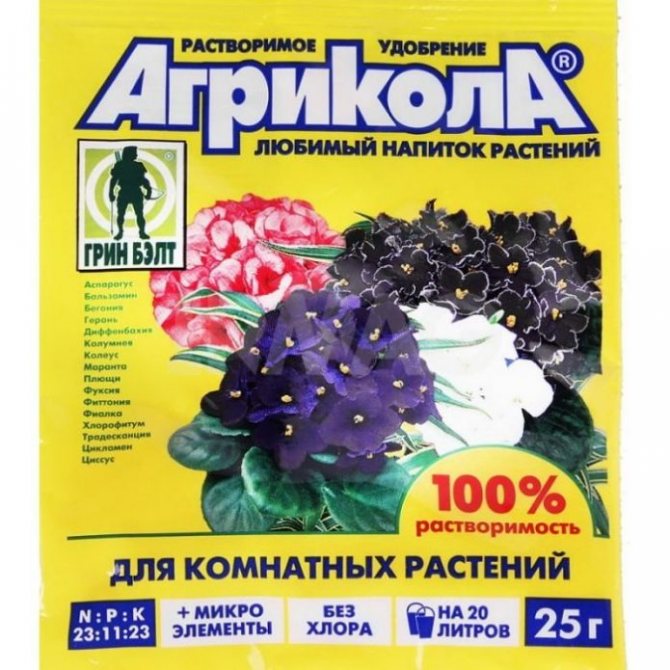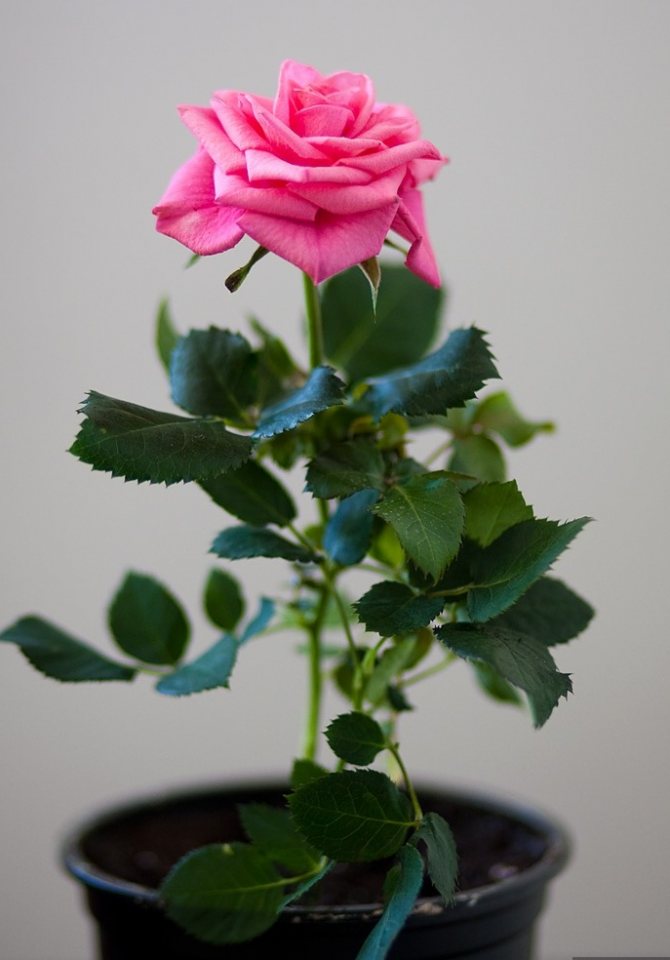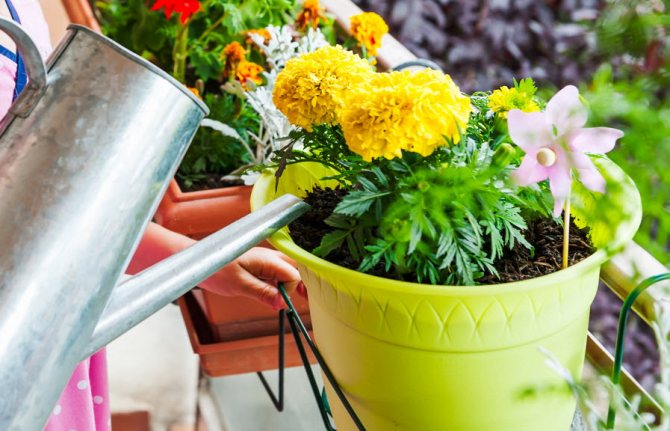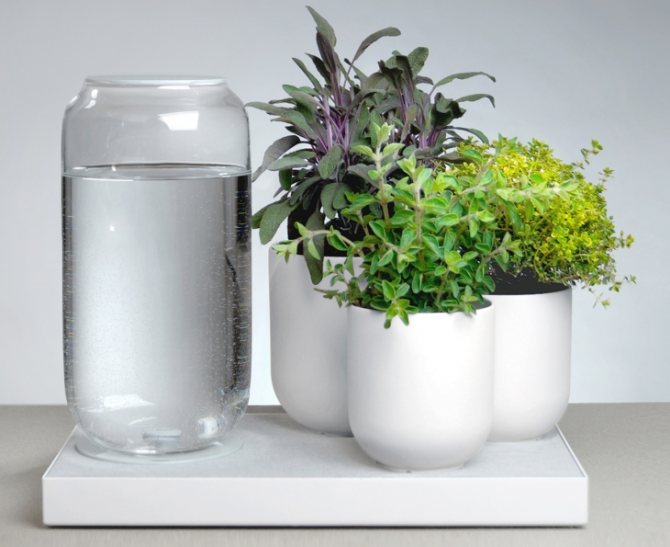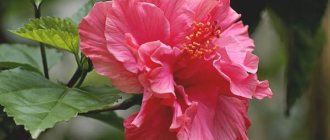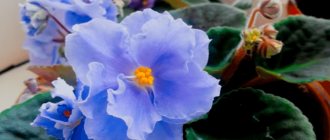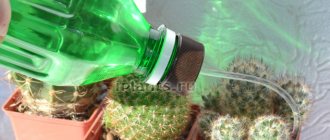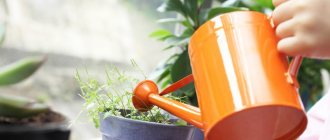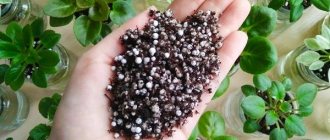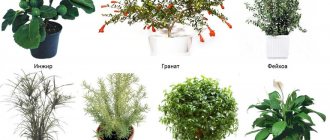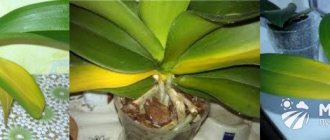Proper moistening of indoor flowers, seedlings and garden beds is the most important condition for the normal development of culture. Experienced gardeners and professional farmers insist that it is impossible to water the plants with cold water. The optimum temperature is about 20 degrees. Fluctuations of up to 4 degrees in the positive and negative directions are permissible, depending on the type of plant, the ambient temperature and the method of watering.
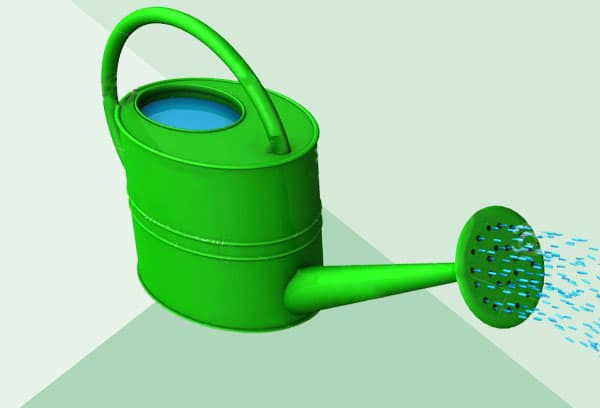
Houseplant care: preparation for wintering
It is better to start preparing flowers for winter in the fall: if some plants do not stop growing, then by the next season they will lose their attractiveness or the ability to bloom.
Before wintering, the plants are treated with fungicides and insecticides against possible infection by fungi or pests. If there is no desire to use pesticides, then we wipe the leaves and stems with a cloth dipped in soapy water, while making sure that the water does not flow to the roots. We repeat the procedure in a week.
We remove all dry, damaged leaves. Due to the dry indoor air, the green parts often turn yellow and are exposed to pests, so the cleaning procedures will have to be repeated many times.
Some plant species completely retire, so we stop feeding them, and gradually reduce watering.
With gloxinia, caladium, you can do the following: stop watering them, wait for the leaves to die off, after that the tubers are dried, cleaned, placed in moss and stored in a cool place (basement, cellar).
If for some reason it was not possible to move the plants to winter, they will have to provide them with additional lighting and moisture - that is, to give them the opportunity to go through all stages of the growing season. Callas, eucharis, cyclamen will also have to be fed, since in autumn and winter is the usual time for their flowering.
Preparing indoor plants for winter
Plants should be prepared for the winter regime gradually. In nature, in the fall, simultaneously with the shortening of daylight hours, the temperature of the air and soil drops, and plants at this time begin to accumulate strength for growth and flowering next year. If you force your indoor flowers to continue growing, despite the snow outside the window, it is likely that next season they will refuse to bloom, and decorative leafy specimens may lose their attractiveness for a long time. Therefore, you need to give them a rest in conditions that are as close to natural as possible.
To send plants for the winter, they must first be treated against fungal infections and pests. For insects, flowers are sprayed with insecticides or acaricides, and for fungi - with fungicidal preparations, and it does not matter whether there are signs of disease or the presence of pests on the plants or not. Since most of the pests are concentrated on the underside of the leaves, make sure that the insecticide also gets on it during the treatment. For sucking pests, such as aphids, ticks and thrips, it is better to use insecticidal acaricidal preparations that deal with all types of insects, for example, Actellik, Fioverm, Apollo or Akarin, and scale insects and worms are destroyed with Confidor.However, if there is little or no pest infestation, first wash the plant leaves three times at intervals of five days with soapy water. To prepare a solution, dissolve 5 g of grated laundry soap or dishwashing detergent in 1 liter of warm water. And only if this measure does not work, spray the plants with pesticides.
Treatment for fungal diseases is carried out with preparations based on copper and sulfur - Abiga-peak, HOM, Oxyhom, Fundazol or Benlat, but all dry and damaged leaves are removed before spraying.
After the harmful microorganisms and pests have been destroyed, stop feeding, gradually reduce watering, transfer the flowers to an unheated room intended for wintering, and arrange the pots so that the plants do not come into contact with each other - air should circulate freely between them. If the windowsills in the room where the flowers will hibernate are cold, put thermo mats or foam pad under the pots. Keep in mind that unglazed ceramic containers lose heat faster than plastic containers. Amorphophallus, gloxinia, caladium, tuberous begonia and calla stop watering when their leaves completely die off, after which the tubers of the plants are removed, dried, cleaned of dry roots, decayed places are removed from the rhizomes and the wounds are sprinkled with crushed coal. Then the tubers are wrapped in sphagnum moss and stored in a cool dark place until spring.
If you do not have the opportunity to arrange a dormant period for the plants, you will have to provide conditions for their full-fledged vegetation during the winter, namely, organize additional lighting and air humidification for them.
Houseplant care: lighting
Those plants that are not sent to rest are provided with additional light and moisture. Phyto- and fluorescent lamps, fixed at a certain height, will solve this problem. They are usually installed at right angles.
We turn on artificial lighting only in order to extend the daytime. Flowers usually require 12-14 hours of sun exposure.
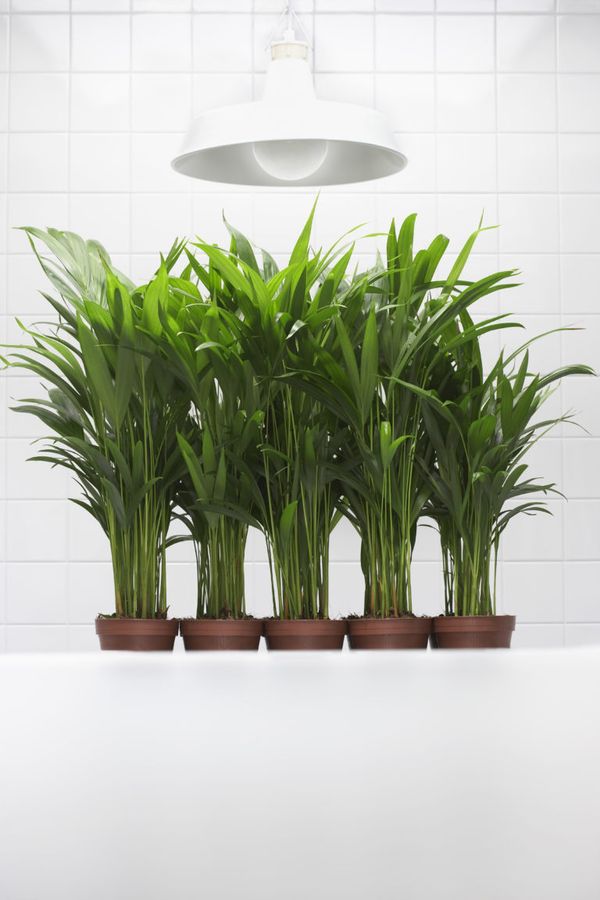

Indoor plants in winter need good light.
Every plant loves the sun's rays. In winter, when the day is shorter, houseplants need to arrange additional lighting, such as using a fluorescent lamp.
If possible, place your indoor plants on windowsills where they can enjoy direct winter light. If the flower does not have enough light, you will see this by the faded color, the slowing down of the flower's growth, the elongated internode.
Eliminate the lack of sunlight and the flower will recover.
Houseplant care: moisturizing
During the cold season, most green pets do not need a lot of water. When and how much we determine from the type of plants - for this you can create your own schedule.
How do you know if a plant needs water? To do this, touch the soil: if it has dried to a depth of 2-3 centimeters, then water the flower. For succulents, the soil must dry to the end - only after that they will require a little moisture.
In winter, the soil in the pots becomes hard and dries up immediately after watering. We make sure that the earth does not turn into one large lump near the roots, otherwise the water will pass through, immediately into the sump.
We arrange a warm shower: let the soil be saturated with life-giving moisture, and the leaves are cleaned of dust. By the way, this procedure will help greens better absorb sunbathing.
Before removing the plants to their usual place, make sure that there is no excess water left, thereby we will prevent root rot.
We spray the plants and loosen the soil - this way they absorb moisture better. The exception is. We put them on pallets with damp pebbles.
Flowers cannot be watered with cold water, it should be the same temperature as the room, or slightly warmer.
What time of day to water the flowers?
It is necessary to take into account the ambient temperature: if the plant is in the room, then it can be "watered" at any time. In the summer season, when the flowers are on the balcony, it is better to water the houseplants in the morning, or at least before lunch. In many areas, even in the summer season, night temperatures drop to + 12 + 15 degrees. In such conditions, evening watering will be even dangerous: coolness combined with wet soil can provoke root rot! In addition, in hot midday hours, the leaves of the plant evaporate more moisture, which means that water for the roots will be very useful.
Houseplant care: comfort and temperature
Providing comfort to indoor plants is an important task for amateur flower growers. Wipe dust off the leaves, and for some green favorites arranging a cleansing shower is only a small part of the work. Flowers are gentle creatures that are afraid of drafts and sudden changes in temperature.
A windowsill, especially the south side, is great for getting enough light, but the presence of batteries and fluctuations in heat and cold (coming from the cracks of the windows) contribute to the wilting of the plants. A humidifier, sealed windows will help solve this problem.
The leaves should not come into contact with the glass, and it would be good to arrange the pots so that there is some distance between them - it is better for the plants not to touch each other.
For heat-loving flowers (these are orchids, calatheas, shefflera, coffee tree) we are looking for a place not on the windowsill - here they will feel bad.
If the green pets have begun to fade, then it's time to warm them up. This can be done with a foam pad under the pots. During severe cold snaps, we cover the windows with blankets or wooden shields.
Plastic containers are warmer than clay containers. This should be considered with some plants. Ceramic pots can be temporarily wrapped in warm rags.
Temperature for indoor plants in winter
As for the air temperature in the room, each plant has its own requirements. Plants are conventionally divided into four groups: thermophilic, requiring a moderate temperature, cool plants and hardy plants that adapt to any temperature. For example:
- - tradescantia, cyperus, aloe, alocasia, cordilina, aspidistra, clivia and ivy can adapt to any room;
- - aphelandra, many orchids, bromeliads, aroids, calathea, shefflera, codiaeum and coffee tree are thermophilic plants;
- - oleander, schlumberger, fatsia, cyclamen, sansevieria, aroid, some bromeliads, agave and asparagus need a moderate temperature;
- - many cactus, boxwood, pelargonium, fuchsia, laurel, conifers and hydrangea winter in the cool.
If you value your flowers and want them to regain their strength before the start of the next growing season, you can arrange them for the winter on an unheated veranda, in a brick shed with windows and without cracks, or on an insulated loggia. The temperature in the room in winter can be regulated by all sorts of tricks, for example, in the event of a cold snap, close the doors with additional wooden shields or old blankets, insulate pots and windows with cloth, foam or cotton wool.
Houseplant care: blooming in winter
With proper care, orchids, jasmine, roses, fuchsias, primroses will surprise you with their blooming outfit.
Cyclamen with its butterfly flowers will delight almost the entire season.
Poinsettia, the Decembrist in winter is gifted with flowering in the coldest time - in the middle of winter.
For a good mood at this time of year, you should buy an azalea - indoor rhododendron envelops a luxurious cloud of inflorescences.
In January, the distilled lilies of the valley, hyacinths, tulips and daffodils ripen.
All these plants have a dormant period in the summer. But even in cold weather, they prefer lower temperatures than we like. Only good care of indoor plants in winter can give us the opportunity to admire them.
If you pay close attention to flowers in winter, create the necessary microclimate for them, you will be able to preserve and increase their decorative appearance and prepare them for the meeting with spring.
(Visited 365 times, 1 visits today)
Winter brings with it a lot of cold and snow. At such a time, green plants are especially appreciated, giving their bright colors and a reminder of warmth. In order for them to continue to delight you, caring for indoor flowers in winter should be special. With the onset of this period, many plants stop growing and fall into a dormant state. To maintain their beauty and health, it is important to take proper care of them.
General information about feeding indoor plants
The need for feeding is caused by the small area of the pot. And if the owner believes that the flowerpot is very spacious, the plant will still lack minerals. Useful microelements in the substrate are only enough for 2-4 months, and after this time, indoor crops need additional nutrition. Exceptions are specimens that are in a dormant period. While they sleep, they do not need fertilizer.
If the question arises: is it necessary to fertilize indoor plants in winter, it should be borne in mind that in the cold period the flowers slow down their processes, and the use of top dressing leads to soil salinity. And such an excess negatively affects the general condition. It is also necessary to fertilize flowers that grow under artificial light and continue to actively develop during a short daylight hours.
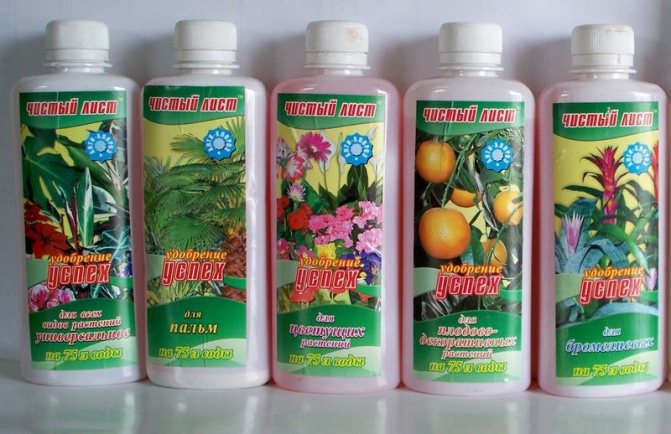

Certain fertilizers are intended for different types of plants.
It is advisable to feed the plants in the dark. During these hours, the flowers do not feel the sun's influence, evaporation is slow, and they are fully nourished.
There are such types of fertilizers:
- versatile, which are suitable for most indoor plants;
- for flowering specimens;
- for decorative deciduous.
These are basic dressings that do not exclude an individual approach to weakened flowers.
By the form of introduction, they are:
- liquid - they are brought in with water during watering;
- long-acting (granules) - when buried in the soil, they gradually fill it with micronutrients;
- for the foliar system of plants (liquid form) - all foliage is evenly sprayed with such fertilizers.
Why they need to be fertilized
In different periods of the growing season, flowers need different trace elements. When there is active growth, it is necessary to fertilize the soil with nitrogen compounds. Thanks to them, indoor plants grow green mass. If buds appear, the flowers need phosphorus and potassium. Flowering is delayed - you need to add magnesium to the soil. Lack of potassium leads to the death of young shoots. If the leaves are stained, they lack iron. Weak roots signal the absence of boron in the soil.
It is possible to understand that some specimens need additional fertilizers by the following general characteristics:
- growth slowed down;
- the stems became weak and elongated;
- leaves droop, turned yellow, or faded;
- flowering is delayed;
- flowers do not grow, but remain small;
- lack of fruit on previously fruiting plants.
When flowers are weakened, they lose their decorative appearance and ability to resist diseases and pests.
Content rules
We equip the window sill
With the onset of winter, the air temperature near the window drops to +5 degrees on average. Therefore, it is important to insulate the windowsill so that the plant can receive natural light.
With the arrival of severe frosts, it is recommended to hang the window with polyethylene foil. It is attached to the tape. Place a foam roller under the frame, having previously wrapped it in plastic.Place the foam plates on the windowsill itself, and you can put flowers on top of them.
Plants that love warmth should be moved to areas that are warmer. You can place them in hanging baskets. To increase the room temperature, remove all covers from the battery and slightly raise the curtains. Place reflectors behind the battery for extra warmth. This can be an ordinary mirror or foil plates.
To get rid of the severe dryness of the air, which will inevitably arise, try to spray the plants more often. For large plants, wipe the leaves.
Airing
Flowers need airing no less than people. But in winter, it is dangerous to open the window. Because of what, stirring the plants on the windowsill is required so that cold air cannot get on them. For example, on the side of the window, while the flowers must be covered with a special shield. You can make it out of paper or film. After airing, the shield is removed.
If you could not save the flower, and it shows signs of freezing, then give it a cold shower. If this does not help, then cut off individual parts of the flower that are frozen.
During cold weather, the humidity in houses drops several times. Even human skin becomes drier during this period, it is not surprising that plants find it difficult to survive this time. To create more comfortable conditions for them, purchase a hygrometer.
He will measure the level of humidity in the room, and you will always be aware of this indicator. You should also purchase special humidifiers. They are useful not only for green pets, but also for all inhabitants of the house.
A home fountain can also be a way out. In addition to good air humidification, it will add beauty to the room, and peace of mind for people in the house. But keep in mind that such an additional element will require a lot of space.
Also in winter, when humidity is low, place all plants closer to each other.
When they are together, it is easier for them to maintain and maintain a normal microclimate for themselves.
Spraying and watering
Caring for indoor plants in winter requires a slight change in the usual watering. At this time of year, there is much less light and the flowers do not grow as intensely. When the plants are watered abundantly during the cold season, provided that the room where they are warm, they will begin to stretch.
At the same time, the stems will become thin and the leaves will be small. To prevent this, water them only once a week. Feel the ground, water is only needed when it is dry.
Spray the flowers more often and loosen the soil. Then it will be easier for air to penetrate to the roots. There are plant species that do not require frequent watering during the winter. They know how to store fluid in their tissues. For those flowers that require moderate watering even in the summer.
There are some types of flowers that do not need to be sprayed, otherwise their leaves may start to rot. They are placed on pallets, inside of which there must be damp pebbles or expanded clay.
Plants with large leaves should be watered sparingly and only on condition that the topsoil has already dried at least 1 cm deep. If you have plant species that do not tolerate moisture well, even in cold weather, water them carefully. Frequent watering will lead to waterlogging of the soil.
Rest
Some varieties of flowers require retirement during the cold season. For example, cacti. It is necessary to gradually reduce the number of watering these flowers, and completely abandon fertilizers.
Lighting and feeding
When thinking about how to care for indoor flowers in cold weather, it is important to remember about lighting. Indeed, it is during such a period that they really lack natural light.To add light for a few hours, turn on lights near your home every day. With clean leaves, flowers absorb light more easily. Therefore, always keep them free of dust. Since February, you can refuse backlighting, because the day is getting longer and there is more light.
If the flowers do not show signs of active growth, you can refuse feeding. Mineral substances will be poorly absorbed, which will lead to salinization of the earth and a negative effect on the roots. Plants that grow actively all year round, especially large-sized ones, should be fertilized.
But do this only once a month, and not like in the warm season. In February, you can switch to summer mode. The dose of top dressing, which is indicated on the package, is recommended to be reduced by 2 times in the cold season.
Those species of plants that bloom in winter and spring should be fed regularly. Better to choose granular.
Don't leave plants in a draft
If you ventilate the room by opening a window, it is best to move the plants to a different location so that the frosty air does not harm them.
For most indoor plants, the optimum temperature for wintering is not lower than +15 degrees.
We hope our tips for caring for indoor plants will be useful to novice housewives - flower growers.
May your indoor plants and flowers be healthy and always pleasing to the eye in winter.
Indoor plants in winter are in the most unfavorable conditions, we can say that indoor plants are tested for survival in winter. To make it easier for green pets this test of strength, adhere to 5 rules for caring for indoor plants in winter:
First rule: In winter, water indoor plants sparingly or sparingly.
... Even moisture-loving tropical crops, which thrived in summer with abundant and frequent watering, should be watered less frequently in the fall, for example, reduce the frequency of watering to twice or once a week.
Moderate watering is watering the plants after the top layer of soil in the pot dries out, determine the state of the soil visually or by touch with your finger.
Drought-resistant plants are rarely watered in winter, about 1-2 times a month, after the clod of earth in a pot has completely dried out. Such species usually do not like waterlogging in summer, and in winter stagnation of moisture in the ground is dangerous for them, since the roots of such plants are prone to decay. Drought-resistant crops include cacti, succulents. Rare watering is required for plants that go into a state of complete dormancy in winter, usually the ground part dies off so that the rhizome or tuber in the ground does not dry out, watering is carried out once a month.
The quality of irrigation largely depends on the quality of the water. Let the water stand for at least two days in an open container so that the chlorine evaporates, the water must warm up to room temperature.
It is useful for the prevention of root rot once a month to water indoor plants with "Fitosporin". For this, 3 gr. powder is diluted in 5 liters of water, the solution is infused for 3-4 hours and watering is carried out as usual.
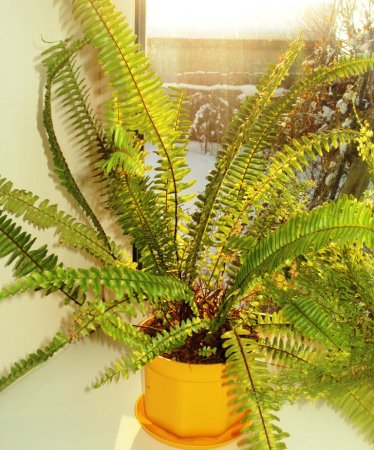

Second rule: Provide indoor plants with maximum light
... In winter, especially in December, the duration of daylight hours is minimal, while the rays of the sun are weak, almost do not warm, while in summer they can leave burns on the leaves. Therefore, in winter, all indoor plants are rearranged on the sunniest windowsill, preferably with a southern direction. In places where only cacti and succulents that are resistant to direct sunlight survive in summer, plants with delicate leaves - ferns and other forest plants - thrive in winter. If in summer indoor plants can be in the back of the room, near the window, then in winter it is recommended to rearrange them closer to the light source or install a phytolamp nearby.
Rule 3: Protection from cold and heat is necessary for indoor plants in winter
... Leaves can freeze due to a draft from an open window or dry out in a hot stream of air from hot heaters.
Indoor plants danger lies in wait around:
Ice glass, in contact with leaves and twigs, will freeze them;
When opening vents or doors to ventilate the room, make barriers for indoor plants to protect them from the cold outside air, or move them to another place. Allowing even a minute exposure to a cold draft on the leaves, shoots, plants can instantly wither, then darken and die.
If the floor and the window sill do not warm up, then the ground in the pot with plant roots also cools, therefore, on a cold base, a heat-insulating substrate or a pot holder is required;
Do not place plants in winter near heating devices and radiators, under the influence of a dry hot stream of air, the leaves begin to dry out, brown dry spots form at the tips or along the edges, which grow, while the leaves can curl, turn yellow and fall off. To protect the plants, the batteries are hung with a wet towel or a screen is placed.
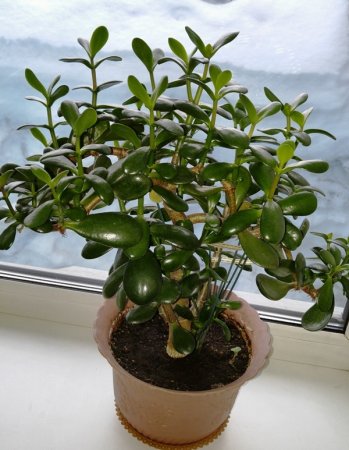

Fourth rule: Increase the humidity in the room where the potted plants are placed.
Moderate air humidity of about 60% is useful not only for flowers, but also for people, in such an atmosphere it is easier to breathe.
In winter, many growers complain that the tips or edges of the leaves dry out, while they can begin to turn yellow and fall off en masse. The cause of all problems is dry air. All tropical crops do not tolerate low humidity. Place wide bowls of water, wet moss or hydrogel balls next to the pots of ornamental deciduous plants. You can quickly increase the humidity in the room by hanging a wet towel on the hot radiator, but you will have to wet it every day to maintain the humidity level.
In summer, indoor plants can be washed as they become dusty, but in winter it is recommended to carry out this procedure regularly - once every two weeks. Under a warm shower, the leaves are well cleaned of dust, the stomata open for breathing, after water procedures the plants seem to come to life. Cover the top of the pots with a plastic bag before you shower your plants to avoid flooding the soil.
5 rule - no fertilizers with nitrogen content
... Feed only those species that bloom or continue to grow, but using complex mineral fertilizers. All organic fertilizers with a high nitrogen content cannot be used in winter for feeding indoor plants. Most indoor plants are not fertilized at all in winter, so as not to cause the growth of new shoots, which still cannot fully develop, with a lack of lighting they stretch out, bend, form ugly faded leaves.
Dear reader, subscribe to the channel! Like it! ...
Foreword
Houseplants are very sensitive to the drop in temperature and humidity levels when November-December comes around. And if you do not provide proper care for indoor flowers in winter, they will simply die. Tips from professional florists will help you cope with the winter cold with dignity!
Transfer
Do not transplant during the cold season. Flowers are dormant. And if you try to propagate and transplant them, they are unlikely to be happy. This does not apply only to those cases when the flower needs urgent transplantation due to illness.
It is recommended to start replanting at the end of winter. The length of the day becomes longer, it darkens much later, the plants wake up, and active growth begins again. New roots are being formed. Because of what this is the most recommended time for transplants.
Then it will be easier and more comfortable for the flowers to get used to the new habitat.The exception is when the flower has become too cramped in the old pot. Then it is necessary to transplant it regardless of the season. Do everything carefully and carefully.
With the onset of March, they begin to increase the watering of indoor flowers, increasing it up to 2 times a week.
Flower feeding
The purpose of top dressing is to restore depleted soil and maintain its nutritional value at the proper level. Soil fertilization is considered a simple plant maintenance task. But you need to understand that all flowers are different, they require an individual approach and strict adherence to the rules.
Care and the need for micronutrients depend on the type and age. Some need to be encouraged to bear fruit, others to bloom, and still others to revive or accelerate their growth.
Indoor plants are divided into several types:
- bulbous;
- blooming;
- fruiting;
- deciduous.
To take care of their health, you need to know what exactly to feed this or that species and in what period to do it.
Ornamental deciduous plants
These include the following instances:
- ficus;
- begonia;
- dieffenbachia;
- dracaena;
- calathea;
- ivy;
- tradescantia;
- alpinia;
- cardamom;
- rosemary.
These plants quickly deplete the substrate, and replanting them in a new pot does not solve the problem. They need to be fed in a timely manner. In autumn and winter, you don't need to fertilize. Ornamental deciduous varieties cannot be abundantly and often fed with fertilizers, since they rest in winter. But if the trunk is bare from below, or the plants look very drooping, it means that they lack nutrients.
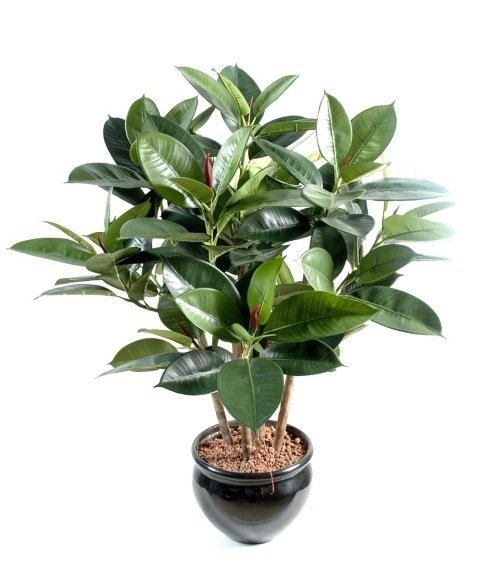

Since the dormant period begins in the winter season, decorative deciduous plants do not need feeding.
The composition of fertilizers must contain all the necessary micro and macro elements. Such complete nutrition can be provided by specialized feeding from flower shops. They contain all the essential additives you need, such as potassium, nitrogen and phosphorus - the three ingredients for the healthy growth of all ornamental foliage plants.
Mineral fertilizers for these flowers are:
- dry (powder, granules, tablets);
- dried (prolonged sticks);
- liquid (solution).
The fertilizers include:
- mineral substances: chemical compounds, rock particles, industrial waste, salts and geological deposits;
- organic matter: waste from birds and animals, vegetable compost admixtures, food waste.
In summer, these species are fertilized once every 10-14 days. In winter, if the plants do not look good, they are fed every two months, reducing the dose to half the required amount. An excess of minerals is contraindicated for cultures at rest during the cold period.
Fern
It belongs to ornamental deciduous plants and feels great in the forest. But in the city it reacts to the polluted air. For his life, moisture and oxygen access are important, and he does not really need feeding. It can be fed with standard houseplant fertilizers once or twice a month by adding the nutrient fluid to the pan. The concentration should be half that for flowering specimens. Organic fertilizers or potassium supplements can be used.
Decorative flowering specimens
This vast blooming group is very popular. Some plants bloom at different times of the year, others all year round, others delight with berries and fruits.
These include the following instances:
- azalea;
- primrose;
- hibiscus;
- asparagus;
- begonia;
- gerbera;
- cyclamen;
- fuchsia;
- gardenia;
- plumeria;
- anthurium;
- rose flower;
- Phalaenopsis orchid;
- chrysanthemum;
- Kalanchoe and many others.
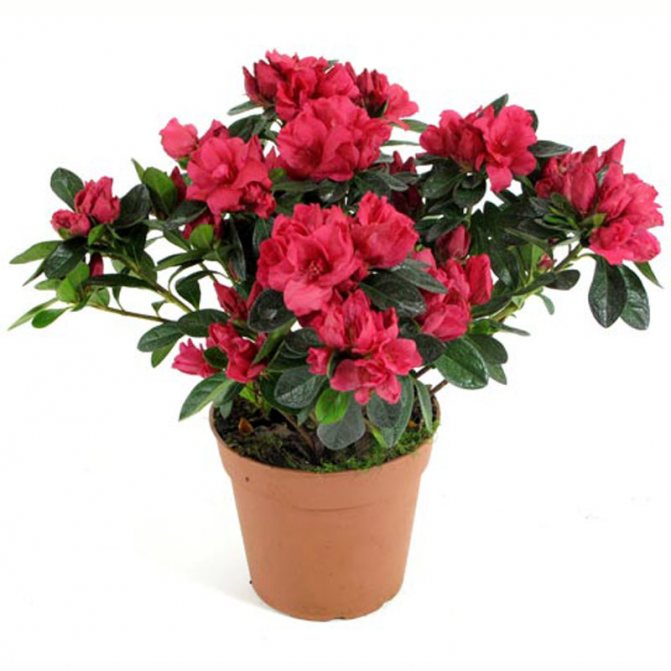

Flowering and fruiting plants need feeding in the cold season.
When vegetative development occurs (early spring and summer), the flowers are fed 1 or 2 times a week. From the beginning of autumn, the dose should be reduced by half, fertilizing the plants monthly.If some species bloom in winter (orchid, eucharis, calla lilies, pelargonium), granular fertilizers should be used for feeding, which regularly and dosed nourish the soil in the pot.
The best feeding for decorative flowering plants is nitrogen fertilizers with a reasonable ratio of potassium and phosphorus. Nitrogen promotes the growth of green mass, and phosphorus stimulates the formation of buds. Potassium is essential for the full development of all parts of the plant.
In winter, flowering varieties require weekly leaf nourishment. The indoor air is too dry during the heating season. It harms exotic thermophilic plants. They need to be sprayed with a complex fertilizer from a spray bottle, paying attention to the petals and not affecting the inflorescences. During the flowering period, liquid feeding is carried out once every 7-14 days, gradually reducing the dosage by half.
Orchid
Phalaenopsis orchid blooms all year round. It needs regular fertilization, and in order not to harm the tropical plant, you need to follow the basic rules:
- Apply top dressing only during the growth period, when new leaves and flower stalks appear.
- Fertilization is possible only a month after transplantation.
- Provide a weakened, diseased flower only with foliar feeding.
- Do not water bare roots with nutrient solution, so as not to burn them.
- Feed differently at different stages of growth. During the growth of leaves, nitrogen is needed, and when the buds are laid, phosphorus and potassium are needed.
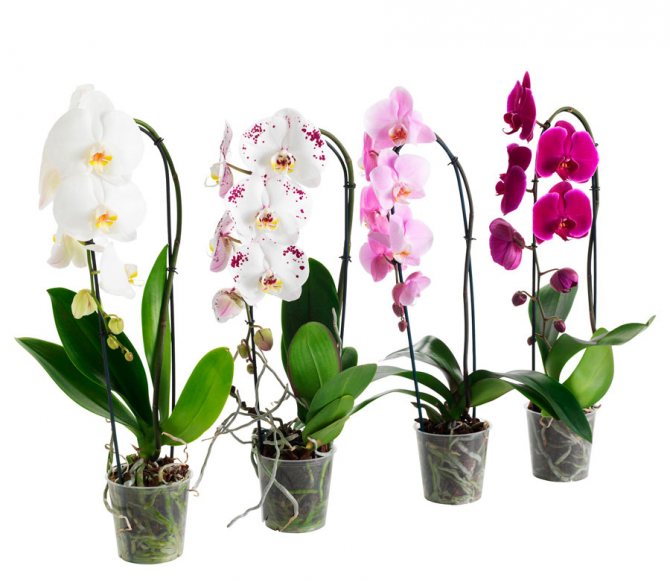

Orchids bloom almost all year round, so you need to feed them regularly.
In winter, the flower is fertilized once a month. He is dormant, but he still needs micronutrients to be healthy. If the orchid has lived without feeding, it cannot be fertilized during the active flowering period. In this case, the lifespan of the buds will be significantly reduced.
Foliar feeding is carried out in cloudy weather or in the evening. The room temperature should be + 17 ... + 27 ° С. Spray the drug starting from the upper leaves, ending with visible roots, avoiding getting the solution on flowers and buds. If fertilizers get on them, they are threatened with decay.
The formulations should contain the following nutrients and indicators:
- the required acidity level (5-7 pH);
- reduced, but not low nutrient content (compared to feeding for other indoor plants);
- iron;
- chelates of the trace element iron (80%);
- special components that prevent the accumulation of salt in the substrate;
- amino acids;
- succinic acid;
- vitamins.
Preference should be given to the liquid form of fertilizers, which is quickly and evenly absorbed into the substrate.
Bulbous plants
They belong to annual decorative and flowering species. In summer, plants decorate the garden, and in winter, the bulb can be transplanted into a flower pot and brought into the house. These specimens wither after the first flowering, but are in dire need of additional nutrition.
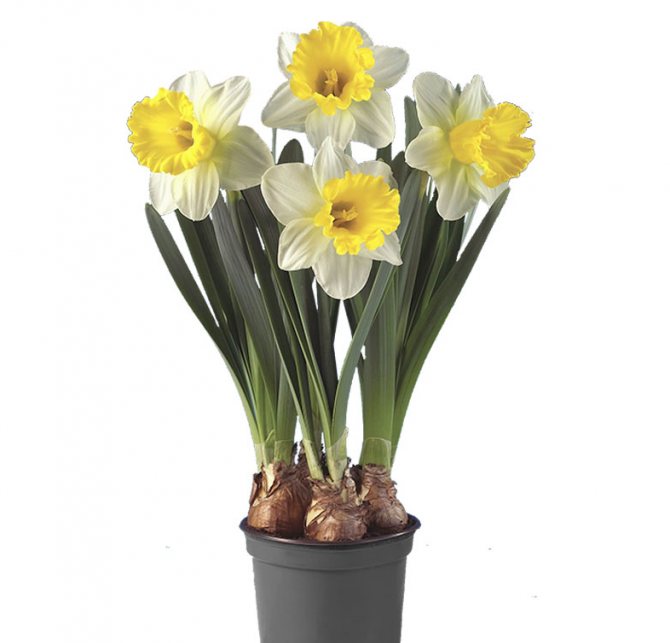

Even after lush flowering, bulbous need additional feeding.
These include the following types:
- amaryllis;
- freesia;
- hyacinth;
- clivia;
- narcissus;
- crocus;
- vallot;
- hippeastrum;
- tulip.
These specimens prefer nutritious and rich soil. The quality of the soil is very important for the development and growth of plants. To build up the root mass, which consists of several accrete tubers, additional nutrients are needed.
Regardless of the season, wood ash must be added to the soil, which will protect the bulb from insects and diseases. You should choose for feeding mineral fertilizers based on phosphorus, which is necessary for laying a beautiful and healthy bud. Nitrogen is also available separately as ammonium nitrate or urea. In winter, it is added to the soil, loosening it slightly. But if you overdo it with this dry fertilizer, the bulb will devote all its strength to the formation of leaves.
In winter, bulbous plants sleep.They are fed with the onset of spring, starting to water once a week until the leaves appear. When flowers form, you need to fertilize once every 10 days. Then reduce the dosage by half and stop when growth has completely stopped.
Pests and the fight against them
Hibernating plants are quite sleepy, but pests do not sleep. They are active at all times, so you should watch carefully so that they do not kill your pets. Wash them off with a regular shower, wipe large flower leaves with soap and water and use special pest control products. You can buy them at a flower shop.
When the dryness of the air increases, the spider mite becomes more active. You can try a homemade recipe against it. Finely chop the garlic and onion and cover them with water. Leave to brew for a few hours. Strain the resulting infusion. They need to spray the flowers a couple of times a week. It is also recommended to immediately increase the humidity in the room where the mite is present.
Fungus and rot are also dangerous in winter. This is especially true when the room is cool and the ground dries out slowly. Dampness appears, which allows the fungi to develop actively. In such cases, constant watering of the plants should be stopped. Only add moisture to them when the soil is dry.
Plants can be difficult to overwinter. Too many negative factors fall on them with the onset of cold weather. Therefore, it is so important to care for indoor flowers correctly in winter. Not only their appearance depends on this, but also their health.
Your care and adherence to all the rules will help indoor flowers most easily endure the cold. And then, with the onset of spring, you will be able to appreciate and enjoy their beauty and aroma. In addition, in gratitude for proper care, flowers will always maintain a favorable atmosphere in your home.
Features of pakhira care at home
In the winter months, we run the risk of losing our favorite flowers that adorn the apartment.
Short daylight hours, dry air from central heating batteries, cold drafts - all these unfavorable factors threaten indoor plants. In addition, in the cold season, many indoor plants "hibernate." This is necessary for them to prepare for next season's growth. And during this "sleep" flowers need special conditions: very warm or, conversely, cool rooms, a special light regime ... Without the necessary care, the plants get sick and are ultimately doomed to death.
What do you need to know to help them winter comfortably?
Violet shower
One of the main winter concerns is to extend the daylight hours to plants: arrange a backlight at night with a fluorescent or ordinary light bulb. Natural and artificial light should together make up a 10-12 hour day. But there are plants that get by with natural light in winter - aloe, calathea, fuchsia.
Indoor flowers do not tolerate drafts. Therefore, when ventilating the room, you need to move the pots away from the window or even move them to another room. On a cold windowsill, it is better to move the flowers away from the glass, put the pots on a small elevation - a board, polystyrene, a plastic stand. The flowers will be warmer. Be aware that flowers are warmer in plastic pots than in earthen pots.
Try to provide your plants with adequate air humidity. Due to the operation of heating batteries, the air in the rooms becomes dry. Spray the plants often with a spray bottle - the flowers love it. You can humidify the air by placing open containers of water in the room. Plants like to take a shower during this period. Rinse them under warm water about once a week (just be sure to cover the ground in the pot with plastic to prevent it from getting wet).
Are you warm, calathea?
According to the conditions of detention in the winter months, indoor plants can be divided into groups:
Hardy - adapting to any temperature of the living space, for example, aloe, alocasia, aspidistra, cordilina, ivy, clivia, dracaena, tradescantia, ficus, cyperus.
Those who love coolness - hydrangea, fuchsia, geranium, wax ivy, pelargonium, laurel, cyclamen, boxwood, conifers, many cactus.
Heat-loving - aphelandra, codiaeum, coffee tree, calathea, shefflera, arrowroot, aroid, bromeliads, many orchids.
Those in need of moderate temperatures - oleander, asparagus, agave, schlumberger, sansevier, fatsia ...
Accordingly, each group needs its own conditions of detention. They can be provided even in the same room, since the temperature in different places is different. Some plants can be placed near the balcony or even between the frames, while others must be carefully protected from hypothermia in winter.
It takes half the dose
Here's what other experts advise:
In winter, plants practically do not need feeding. Fertilizing can even damage the root system. In extreme cases, fertilizers are applied only in a half or even weaker dosage.
Indoor pests will not appear at all or will die immediately after they appear, if you wash the leaves first with soapy water and then with clean water.
To get rid of midges in the ground, water the flowers several times at intervals of 5-6 days with a weak solution of potassium permanganate.
In winter, ferns grow well at home, even in rooms with insufficient lighting. But it is useful to spray them with water at room temperature several times a day.
Ficus leaves will shine and have a beautiful green color even in winter, if you periodically wipe them with a cloth dampened with dark beer, or pour a teaspoon of castor oil at the very root.
By the way
There are plants that bloom in the winter. With proper care, you will be delighted with lush flowers almost all winter of primroses, fuchsias, hydrangeas, roses, cineraria, orchids, indoor jasmine.
In January, forcing bulbous plants bloom - lilies of the valley, hyacinths, daffodils, tulips. Plants blooming in winter are watered regularly using warm water. If you want to always have fresh flowers in the house in winter, cyclamens are perfect for this. One plant can give up to fifty flowers in winter. Loves diffused light, abundant watering.
Important
How to water you now
Many budding growers lose their plants in winter due to improper watering.
In a warm, heated room, the soil dries out quickly and it would seem that it needs to be moistened more often. But this is not the case.
1
In winter, the root system of plants practically does not work, metabolic processes slow down, so the absorption of moisture is not as intense as in the spring-summer period. And excessive moisture leads to soil acidification and decay of the root system. So water the flowers no more than once a week or two.
2
The water drained into the pan during watering must be poured out immediately, since cold wet "feet" are the cause of root rot and the appearance of diseases.
3
Root decay is especially likely if the pot is on a cool windowsill. A characteristic sign and alarming signal is wilting and yellowing of leaves in wet soil. It is necessary to immediately remove the plant from the pot and let the earthen coma dry out. Remove damaged roots if necessary. Once dry, plant the plant back in the pot and water less frequently.
4
Do not water the flowers with boiled water - there is not enough oxygen in it.
5
Use water that has settled at room temperature for irrigation. From a warm plant grows too quickly, they become frail, and cold water is poorly absorbed by the roots, and the flower may die ... from lack of moisture.
6
After watering, gently loosen the surface of the soil in the pots so that the air can better penetrate to the roots (this method is sometimes called dry watering).
Caring for indoor plants in winter, especially for those whose homeland is tropical latitudes, is troublesome.For many of them, a drop in temperature can be fatal: for a start, they will shed their leaves, as if expressing their displeasure, and if no action is taken, their suffering can end in death. If you do not have enough knowledge of how to care for home flowers in winter, check out the tips of experienced florists.
Required tools
The optimum moisture content for indoor plants is 45-60%. However, in winter, when batteries and air conditioners are constantly running, the air becomes drier, as a result of which the humidity drops to a maximum of 20%. If you do not want the flowers in your home to dry out during the winter, you can purchase a special humidifier.
You can also use the "old-fashioned" method, for example, you can spray pots with plants every day or use pallets with wet pebbles or expanded clay.
Remember to keep the flowers away from the batteries, otherwise you might just burn the petals. Despite regular spraying, you should remember that in the winter season the plants need to be watered less than in summer - this is done only when necessary. Do not forget to loosen the ground at the same time as watering, giving the root system air. There are plants that do not need watering at all in the winter season - these include succulents and cacti.
In any case, watering should be carried out only when the topsoil dries to a depth of 1 cm.
It is also important to remember about feeding. Whatever fertilizer you use, in the period from December to March, their amount must be reduced to once a month. If you strongly "feed" your "green pets" with fertilizers, it will have the opposite effect, because your flower can shed all the foliage, and eventually die.
In winter, it is imperative to ventilate the rooms, since this is useful for the plants themselves and for humans. However, it is important not to cross the border here and not to freeze the flowers. Most of the domestic plants develop normally at temperatures from +17 to +23 ° C, there are, of course, more frost-resistant varieties that can calmly tolerate rather low temperatures, but it is still better not to expose them to hypothermia. That is why, having decided to ventilate the room, watch the thermometer.
If you still overexpose them in the cold, you should definitely take care of warming the pots. To do this, you need to put the flowers on a tray with pebbles in a dry and warm place. However, try not to freeze too much, as this will become real stress, and sometimes it will be problematic for flowers to recover. Sharp temperature fluctuations even lead to death.
How to care for home flowers in winter: temperature when caring for plants
When caring for indoor plants in winter, keep an eye on them. If the glass is frozen over, iced up, then it is necessary to move the plants away from the windows at night. Near icy glass, the air is colder than room air by 10 ° C. The temperature regime during the day should be in the mini-garden zone not lower than + 20 ° С, at night - within + 15 ° С. Also keep in mind that cucumber plants do not tolerate drafts and require high humidity. It is not difficult to humidify the air, for this you just need to place trays of water between the plants.
Plants of northern latitudes, grown in the room, and plants that shed leaves for the winter, should be kept on cool windows, watered sparingly, however, not allowing the earthen coma to dry out.
How to care for indoor flowers in winter, whose homeland is rainforest? For coffee trees, cyperus, bromeliads, palms and other southern guests, the temperature drop is dangerous, so keep them year-round at + 18 ... 22 ° С.
Indoor flowers standing on the windowsill are advised to be placed on a platform made of polystyrene or wooden slats - in order to avoid hypothermia of the earthen coma.From the warm dry air coming from the central heating radiators, they will be protected by a shield made of thick cardboard or plywood.
Due to the lack of light, the leaves of variegated plants such as zebrina, golden scindapsus, lose their characteristic color, turn green. Therefore, when caring for these home flowers in winter, they need to be exposed in the brightest place on the window, it is best to keep them at a temperature not higher than +18 ° C.
When to water your house flowers?
Before watering your home flowers, you need to stock up on the right tools.
Watering with a watering can is done in the morning, but do not water if bright sunlight is directly on the pot. The pot should be placed in a pallet or in a waterproof planter. Pour the water slowly using a long-nosed watering can. Place the end of the spout under the leaves and close to the edge - let the water seep down. Check it out in about 10 minutes. Water again if the water hasn't passed all the way. Drain any remaining water from the pan or planter after about 30 minutes.
When to water? Check the pots every few days in the summer and weekly during the winter. Measuring water loss by raising the pot is useful but requires some skill. Raise the pot immediately after watering - remember the weight. Raise the pot again when the water demand has been established in a different way — again try to remember the weight. Use the difference between the two weights when lifting the pot in the future to see if the plant needs watering. For some people this is easy, for others it is impossible.
How to care for indoor plants in winter: watering when caring for house flowers
How to care for indoor plants in winter and how often they need to be watered
:
- All plants need less watering in winter. First of all, this applies to plants that come from the subtropics. They should only be watered when the top layer of soil in the pot is dry. With excessive watering, the roots will rot. Optimal watering frequency depends on the room temperature, plant size, and the volume of the flower pot.
- Winter has a dormant period. All vital functions are slowed down. Watering should be significantly reduced if you keep them in a cool room. In February, cacti are watered no more than 2-3 times a month. In this case, care must be taken that water does not fall on the plant itself. Water droplets trapped between the ribs and thorns can cause the stem to rot. Better to pour into a pallet.
- (hippeastrum), which is time to bloom, can be transferred to a warm room with a temperature of + 18 ... 20 ° C. When caring for these flowers in winter at home, watering should be started when a flower arrow appears from the bulb. At the same time, the amaryllis is given the brightest place.
How do i irrigate by immersion?
This is the so-called bottom watering, in which the flower pot is immersed in a container of water and remains there until the soil has absorbed enough moisture. In this case, the water level should not reach the edge of the pot, it is quite enough if it is in the middle of the height of the pot with a flower.
How long should you leave a flower in a container of water? There is no need to wait for the soil in the pot to absorb all the water, more than the flower needs, it still will not absorb. Usually half an hour is enough for the flower to "get drunk". Excess moisture will drain into the pan, in this case it is advisable to drain it so as not to provoke acidification of the soil at the bottom of the flower pot.
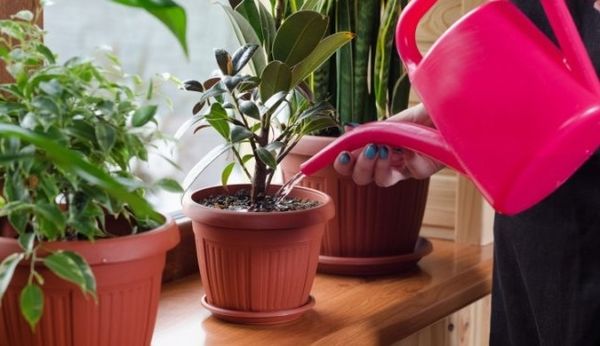

Fertilizers when caring for flowers in winter at home
In winter blooming saintpaulias, primroses and other plants, it is necessary to remove faded shoots in a timely manner. This stimulates the formation of new peduncles. Since at this time these plants grow and bloom intensively, they are fed with a solution of special fertilizers for flowering indoor plants.When caring for indoor flowers in winter, mineral fertilizers are alternated with organic and organomineral fertilizers (OMU).
Winter for indoor plants
the time is difficult: limited access to light during short and cloudy days, in our apartments there is too little humidity and high temperature (heating), ventilation with cold air can lead to attenuation of plant growth and leaf fall. We will help our indoor plants to survive the unfavorable period in winter.
What and how to feed
Supplementary feeding of indoor plants in winter is a rare procedure rather than necessary. Illiterate feeding will only harm the flower. Since the roots do not work actively at this time of year, excess substances can simply burn them off.
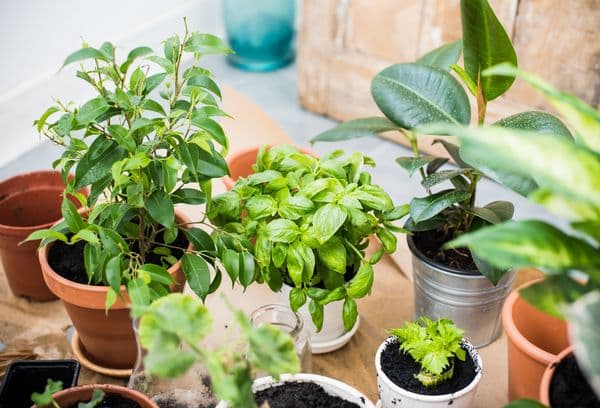

The introduction of fertilizers is relevant for crops whose flowering occurs in the winter: these are azaleas, poinsettias, guzmanias, cyclamens, etc. They are fed with special formulations, at half the recommended dosage and no more than once a month. The hostess should monitor the condition of the green pet after the procedure. If the appearance has not deteriorated, then feeding can be continued.
An important rule Top dressing should not contain nitrogen. This element is necessary with the beginning of the growing season for the resumption of the growth of the green mass. A flower in winter does not need such fertilizers. If you stimulate the growth of shoots, then you can get crooked and elongated plants.
Shine
In winter - when the days get short and cloudy - our flowerpots may lack light. Lack of light leads to the fact that the stems become unnaturally elongated and lethargic, the leaves lose their intense green color. In addition, varieties with variegated, colored, spotted leaves (eg) lose their decorative qualities as their leaves brighten and fade. Leaves of insufficiently lit plants often fall off, and plants most sensitive to a lack of light can completely fade away.
To prevent the consequences of a lack of light, plants should be placed as close to windows as possible. Most of the sun's rays enter the windows on the east and south side. Do not cover the windows with roller blinds, curtains, curtains, so that as much light as possible gets into the room. We can also artificially illuminate the plants. It is better to use brightly glowing lamps that do not heat up for this purpose (fluorescent lamps and LED lighting are suitable, for example).
Why do leaves turn yellow and fall
In order to prevent significant damage to the plant in winter, you will have to carefully look after it: protect it from drafts, dryness, carefully measure out a portion of water for irrigation, do not forget about spraying.
Do the leaves of plants turn yellow and dry in winter, fall off, and the shoots stretch out? There are several reasons for this popular phenomenon:
- The flower lacks sunlight.
- The air is too dry.
- The flower is exposed to drafts, temperature changes.
- Leaves touch cold surfaces.
- Too much fertilizer applied.
A small amount of dried and yellow leaves on the plant in winter is natural aging. They are simply cut off. And if the yellowing takes on a large-scale character, it's time to pay attention to all the conditions for keeping the flower.
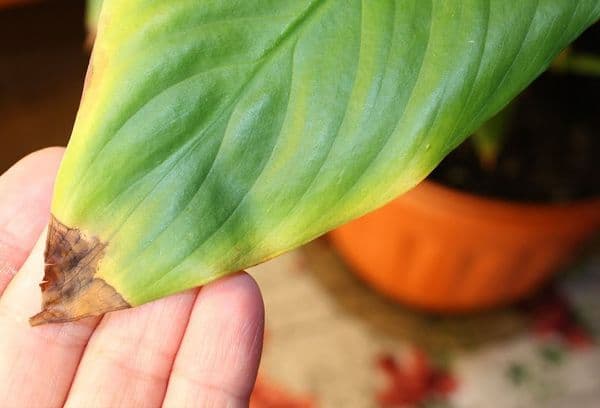

Solving the main problems:
- Tropical plants need additional air humidification. Humidity in a room with operating batteries can drop to a critical level. Since flowers receive moisture not only from the soil, but also from their air, often spray them with soft and warm water from a spray bottle. Dieffenbachia, spathiphytum, dracaena are the first to react to dryness in winter.
- The amount of light depends on the state of the flower. If it is at rest, then normal daylight hours are enough. Many tuberous crops generally move to a dark place before the end of winter. If the growing season falls in the winter, then you will have to organize an additional light source.On average, another 2-3 hours of illumination is sufficient.
- For the time of airing, the plantings are carried out of the room.
- So that the flowers on the windowsill do not freeze, they are placed in a warm pallet, a layer of sawdust is added.
- It is better to under-feed the plant in winter than to ruin it with an excess of fertilizer.
A flower needs care in winter as it does at other times of the year. Knowing the specifics of the species and variety and taking into account the conditions in the room, even a beginner will cope with the maintenance of the plant. And the last tip: if you are not confident in your abilities, then first choose easy-to-care plants. These are ficuses, geraniums, petunias, bulbs, some cacti and succulents, unpretentious conifers and shrubs.
Temperature
In winter, our homes have central or autonomous heating batteries, stoves, air heaters, but the hot air of heating systems is categorically unsuitable for indoor plants. Lack of light leads to the fact that plants can go into a dormant state, however, too high a temperature in the room does not allow them. They release new shoots and leaves, however, due to unfavorable conditions, these are weak, thin shoots. The ideal solution would be to move the plant to a clear and cool place with a temperature of about 15 degrees Celsius. A heated veranda or winter garden is better, but few people have such premises in their homes.
It remains for us to move the plants as close to the windows as possible, since it will be a little cooler on the windowsills. However, it is important that there is no heater directly under the windowsill, which will additionally heat the plants. Remember, the cold air that enters the apartment when it is ventilated will also not benefit the plants.
Species sensitive to cold and drafts (e.g. crotons, cyclamens
) can completely lose their leaves. For the duration of the airing, the plants from the windowsill should be moved deeper into the apartment. Plants that are most sensitive to low temperatures are those with fleshy, smooth leaves that contain a lot of moisture (e.g.
kalanchoe
). The water in the leaves during intensive ventilation can freeze, causing irreversible damage to the flower.
Is it possible to transplant in winter
A transplant is required for plants that are cramped in the previous pot. Usually this procedure is performed every 1-2 years. Many housewives plan it at the end of winter or the beginning of spring, since the plant wakes up at this time and starts growing. A transplant in the middle of winter is a big stress for the plant, it is better to wait until the end of February.
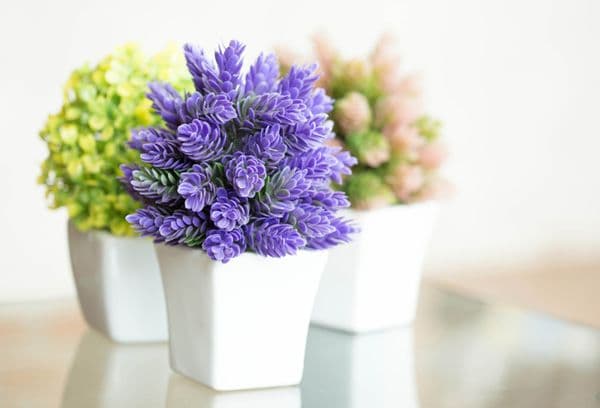

Transplanting a flower at home is very simple:
- we select a suitable soil;
- we buy a pot a little larger than the previous one, always with drainage holes;
- place the drainage layer on the bottom of the pot, sprinkle with soil;
- a day or several hours before transplanting, we moisten the soil with a flower;
- carefully remove the roots along with a lump of earth;
- place the flower evenly in a new pot;
- fill the container with earth to the same level as the previous time;
- water the plant after transplanting and give it a couple of days of rest.
Air humidity
The air humidity in our apartments is too low in winter. Not suitable for indoor plants - especially those that come from tropical regions, where a fairly high air humidity prevails. The air is dried primarily by hot batteries. In addition, in winter we ventilate the room less often, which limits the flow of fresh air. The humidity in the room can be improved, for example, electric humidifier
... On the heaters, you can also hang special ceramic containers that are filled with water. The heat from the heater causes moisture to evaporate, which increases the humidity in the room.
Ceramic radiator humidifiers
come in different colors and types, so we can choose the ones suitable for the interior of our apartment - they will be an additional decoration.We will create the best microclimate for our plants during the winter by placing a flowerpot on a large stand, filled with wet gravel or pebbles. However, it should be borne in mind that the flowerpot is not immersed in water, as too much water can lead to decay of the roots.
How often to spray
If the home flower loves spraying, then this procedure should not be neglected, especially in winter, when central heating mercilessly dries the air in the room. If the flowerpot is placed near or above a radiator, the air around it will be especially dry.
Miss Cleanliness magazine advises removing flower pots away from heating systems, or placing humidifiers nearby, such as a pallet with wet moss and expanded clay.
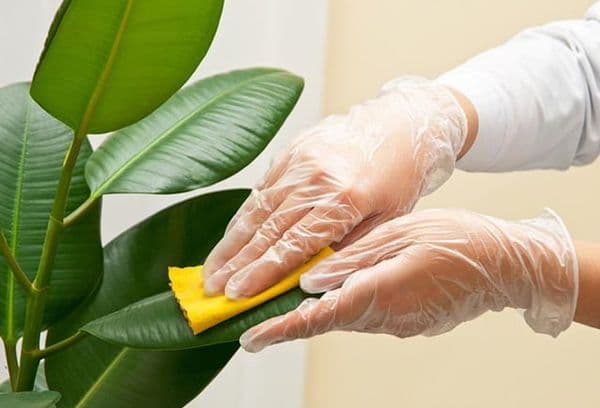

Spray conifers often. Do not forget to remove dust from foliage with a damp cloth, as it interferes with the access of light to the tissues of the plant.
Watering
In winter we water the plants quite rarely - there is no specific rule for this (for example, once a week) - we water only when the soil in the flower pot is clearly dry. It is worth remembering that water deficiency is less dangerous than excess water, since the transfusion of the plant can cause rotting of the roots and it will have to be thrown out. We water indoor plants with soft water at room temperature - hard water contains magnesium and calcium salts, and too cold, of course, is not favorable for plants.
Water for irrigation should be settled, since the water taken directly from the tap contains a lot of chlorine that is unfavorable for plants. Tap water should settle for at least a few hours in an uncovered container. The best water for watering plants (both indoor and in the garden) is. It is better to pour water into the pan, and remove the excess after a while. This is especially true for plants that have a tuberous rhizome (eg). Flooding of tubers can lead to rotting. Caution also with succulents
(These include
cacti, Kalanchoe
) - these plants require a fairly dry soil. As well as
Zamioculcas
, which can easily withstand even 2-3 weeks without watering.
Can water be left in the sump?
When watering house plants overhead, some of the water often ends up in the sump. Some consider this to be excess moisture, which must be drained so that the flower does not turn sour. But it is not so! After all, the soil sometimes is not able to absorb all the incoming water at once. For example, if the substrate is dry enough, some of the water can pass through, but after a while the earth will "draw in" the "unfinished" water. Thus, full watering is ensured! In addition, if there is drainage at the bottom of the pot, it will protect the soil from acidification.
Fertilizer
In the autumn-winter period, the plants go into a dormant state, and, as a rule, then do not require fertilization. The exceptions are species that bloom in winter, for example, azaleas, cyclamens, kalanchoe, camellias, primroses, zygocactus
... These plants need fertilizers that must be appropriate for the particular variety (eg for camellias and azaleas, acidic fertilizers must be used). We start fertilizing other plants in the second half of February, when the days get longer and a new growing season begins. It is worth remembering that the fertilizers that we use in the spring are rich in nitrogen: this element will stimulate the plant to release new shoots and leaves.
How to water flowers correctly?
Before watering the flowers, it is necessary to determine the degree of soil moisture and prepare the water. There are many tips on how to properly water flowers, but there is no universal recipe for this.
Plant with dry wintering. Desert cacti and succulents require moderate watering during the active growing season from spring to fall. In winter, the compost should dry out almost completely.
The first critical step.Your new plant may suffer or die if you don't complete this simple task that is rarely mentioned in books or articles. Look at the pot - it is likely that the compost is at or above the edge of the pot. This makes proper watering very difficult. So your first job is to create enough watering space. Remove excess compost to create a gap between the rim of the pot and the surface of the compost - about 1 cm in a small pot and 2 to 3 cm in a large pot.
Other procedures
The necessary procedures that must be performed in winter include, dust removal and spraying of plants
... We leave pruning, replanting, reproduction for the spring. Dust that settles on plants makes it difficult for light to reach and limits photosynthesis. Therefore, our indoor plants should be regularly cleaned of dust. We can transfer smaller specimens to the bathroom and rinse them with warm water, for example, under the shower. However, you should close the pot appropriately so that the water does not flood the roots. Gently wipe the leaves and stems of large plants with a damp cloth.
Cacti, also plants whose leaves are covered with wax or nap, fan them with a brush. We can also direct air from a hair dryer at them - but only in the case when there is an option of blowing cool air, because hot air can harm the plant. Spraying is designed to increase air humidity and provide plants with conditions that are closest to their natural habitat.
We therefore spray plants originating from tropical rainforests (eg). For spraying, we use settled, soft water at room temperature. It is worth remembering that the demands of indoor plants may differ depending on the species: some require high air humidity (orchids), others tolerate drought well (cacti), others should be fertilized (plants blooming in winter). Therefore, it is worth knowing exactly the requirements of our wards in order to ensure the optimal houseplant care
in such a difficult period as winter.
Why does water have to be warm
If you use water for irrigation, the temperature of which is below 15 degrees, this can lead to the following negative consequences:
- Slowing down of all biological processes of plants.
- Many substances do not dissolve well in cold liquids. For this reason, watering will prevent the plants from getting the benefits they need.
- When watering with cold liquid, young shoots of the root system are greatly affected.
- Cold watering lowers the immunity of plants, which makes it harder for them to resist diseases and pests. The ability to recover is also impaired.
To avoid unpleasant consequences and to ensure normal growth and development of plants, it is worth watering them only with warm water. The permissible temperature is considered to be 25-30 degrees or slightly higher.
The most beautiful plants blooming in winter
Azalea
This flower is native to the moist, cool forests of East Asia. In this regard, he prefers places that are not very warm (max. 18 ° C). It should also be sprayed frequently (even 3 times a week). They require frequent and fairly abundant watering, with soft, settled water. White, pink or red flowers adorn this plant from late autumn to late spring (November - May). After flowering, the azalea should be transferred to a cooler place. It is worth remembering that even during the dormant period, this plant should have a slightly moist soil.
In nature, they grow in cool, humid places. Prefer shady and slightly shaded areas. At home, they prefer a warm and dry place, especially in winter. Too high temperature and low humidity of the air lead to the fact that the flowers of cyclamens dry out, the leaves turn yellow. To prevent this, you should alpine violets
keep in a cool place.However, these plants are very sensitive to frost and can suffer damage even when ventilated. Have
cyclamen
must be constantly wet soil. In order not to get too wet the tubers, which can rot, the water should be poured into the pan, and the excess removed.
Kalanchoe
Originally from Madagascar and belongs to succulents, so it should not be over-watered (we limit it, especially in winter). Kalanchoe
prefers bright places. Refers to plants of a short day - temporary darkening stimulates the formation of flower buds. In this regard, for a month to two, it must have limited access to light (less than 10 hours a day). Kalanchoe blooms in white, yellow, orange, red or pink. Also has decorative fleshy leaves. After flowering, the plant should be pruned. Dried flowers must be cut along with the stem.
Camellia has evergreen, shiny, leathery leaves, its flowers resemble a flower in shape, and are white, pink or red in color. Camellia flowers appear from November to April. This plant is very sensitive to changes in temperature and humidity of the air, it also does not tolerate a change of place. Camellias
love acidic soil (pH 4-5). They thrive best in cool places, but cannot stand frost. When the camellia blooms, you can place it in a slightly warmer place (max. 16 ° C). A sudden change in temperature can cause the flower buds to fall off. During flowering, the plant requires abundant watering.
Primula (Primrose)
Primroses
bloom in white, yellow, orange, red, pink, purple in various shades. There are also two-tone varieties.
Primroses
feel best in cool places where high humidity prevails. The colder the place (even 1-2 ° C), the longer it blooms. Primroses must have constantly moist soil, they do not tolerate overdrying very well. After flowering, the plant can be grown outdoors. Primroses grown in the garden bloom in early spring as soon as the snow melts.
Orchids
Orchids
grow near the sea, high in the mountains, in a temperate zone, at the equator, so growing conditions must be adapted for a particular orchid variety. They feel best on the western and eastern windows. They need a loose soil that will provide free air access to the roots and will dry out quickly. We put drainage on the bottom of the flower pot. Orchids need. To increase the humidity, place the flower pots in a large container filled with expanded clay, which we fill with water.
If you have something to add, please be sure to leave your comment.
Which is better - top or bottom watering?
Top watering of indoor plants is a more familiar way for many, when water flows from top to bottom to the roots. At the same time, the upper part of the soil remains moist longer. It is impossible to say unequivocally which of the methods is better and more effective, it is necessary to take into account the individual needs of plants. So, for bulbs that do not like to stay in a damp environment for a long time, it is better to use top watering in order to reduce the risk of rotting bulbs.
There are plants for which top watering is inconvenient. For example, these are some types of large cacti, also nolin and adenium, which are not desirable to moisturize the caudex. Bottom watering is convenient if the plant "does not like" to wet the leaves, such fickleness include violet, cyclamen, gloxinia. In addition, it is more advisable to conduct bottom watering if the earthen lump is very dry, in this case, when watering from above, the earth simply does not absorb moisture, which will drain along the walls of the pot.
Most deciduous plants do not care how they receive moisture. This is more due to convenience! So, large specimens, it is more logical to "water" from above, and plants with a lush crown - through the pallet.It is believed that in the process of watering by immersion, moisture is more likely to go to the roots and is better absorbed into the soil. But overhead irrigation is just as effective if it is plentiful!
Is it possible to water indoor flowers with serum
People return to nature, everything natural: fabrics, food, drinks. This slogan was carried over to the home flora. Now the question is not about which liquid to choose for irrigation. They take natural products, without pesticides and chemicals. The target was whey. And for good reason.
Whey is acidic. Useful substances: amino acids, trace elements, phosphorus, potassium, lactic bacteria. An invaluable fertilizer and pest control agent. Undiluted product will damage the gifts of flora - upset the soil balance. Suitable tenfold mixed with liquid. This is the base solution.
- 0.5 kg of sugar per 10 liters, a pinch of yeast are added to the milk whey solution. The cut grass is poured.
- iodine is dissolved in the diluted serum (10 drops per 10 l), ash is added.
For watering at the root, 1 part of the fertilizer is diluted in 10 parts of the liquid. For spraying - take 1 liter of solution for 3 liters of water.
Important! At rest, the plants are not fed with serum.
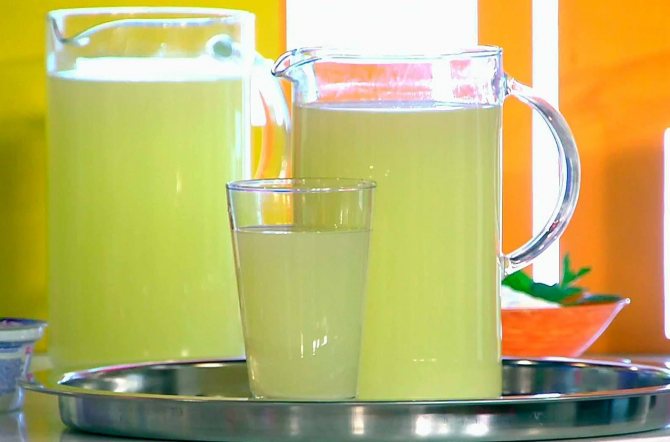

Home greenhouse watering serum
Errors and consequences of wrong actions
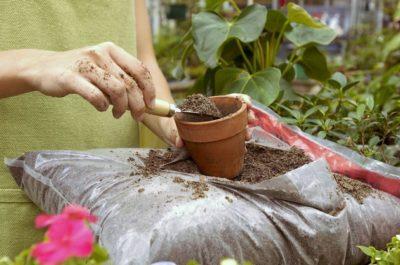

It is very important for novice growers to properly water. Azalea loves moisture, since the shrub came to us from a humid climate, and our task is to keep the soil in which the plant is located constantly moist. But you cannot fill the plant.
Waterlogged soil gives rise to a lack of oxygen and decay of the root system. The plant withers, leaves and flowers fall and die. In this case, it is extremely difficult to preserve the plant.
Another situation. For some reason, your plant has dried up. A flower with a dried clod of earth can be saved. To do this, it must be immersed in a container of water for 3-4 hours to saturate the lump with water, put on a tray to drain excess water from the pot. Regular watering should be carried out no earlier than after 2-3 days.
If you need to learn how to care for an azalea at home immediately after purchase, you can find out about it here. We have also prepared a material for you about pruning: why does a plant need it, how to take care of an azalea after the procedure, and other nuances.
Watering flowers: what water to give preference to
Among flower growers and ordinary lovers of a home oasis, controversy continues to this day: what is the best way to water flowers, and what kind of water is completely unsuitable for watering.
The opinions of experts, of course, were divided, but I will try to bring out my list of "good" and "bad" water.
What to water flowers with
- Rainwater only if it is not collected in industrial areas or near highways. The melt water contains a minimum of salts and harmful acids. This water, when combined with the soil, forms nitrates useful for plants, which contribute to the rapid growth of the flower.
- Enriched with water that is, the one that contains silver ions. You can make such water yourself, at home. All you need to do is immerse any silver object in water for at least 15 minutes. Houseplants should be watered with this water once a week.
- Tap water, but in the event that it is cleaned and not tough. Otherwise, chlorine and the presence of harmful impurities, with prolonged watering, will destroy the plant.
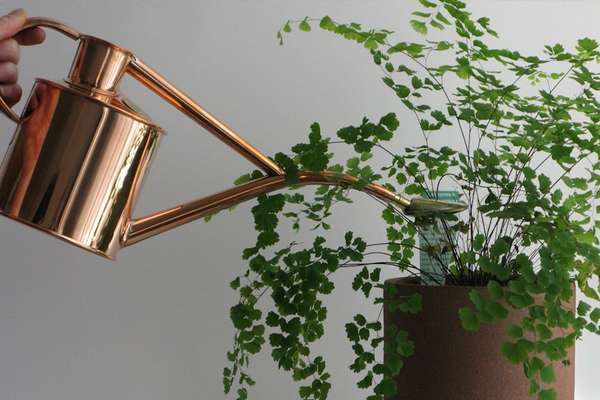

The above types of water are the most optimal for watering indoor flowers for a long time. Such waters are not only safe for flowering plants, but also maximally useful for them, especially melt water. In order not to spoil indoor flowers, it is important to know not only what you can water them with, but also what it is not advisable to do.
Water not to be watered on flowers
- Well water... It often contains too many minerals, and this negatively affects the plant.Flowers, of course, need useful minerals, but their excess will not benefit the plants.
- River or lake water... These types of waters are the least suitable for irrigation. They contain various bacteria, viruses, rotting products and even waste. How not to defend and purify such water, it will still not be useful and safe for indoor plants.
- Distilled water... It is considered "dead" because it is completely devoid of minerals, vitamins and salts. And for the development and growth of home flowers, all these substances, in a reasonable amount, are simply necessary.
- Water from the air conditioner, formed as condensation. Its qualities are very similar to distilled water, and such water, as you know, will not bring benefits to plants.


All of the above types of water relate to irrigation of all, without exception, plants, even overly "capricious" and sensitive. For example, an orchid is a delicate and special flower that requires constant attention and careful, and most importantly, proper care. But even in spite of this, all of the above watering rules are fully applicable to her.
What plants can be watered
Vegetables that can be irrigated and moistened with cold water include:
These are all cold-resistant crops. But, even they should not be watered at the root, but sprayed with water using a diffuser.
Water containing chlorine and iron is contraindicated in cabbage. If you fill it with a cool stream from the tap, then let the water settle until the harmful impurities precipitate.
As for flowers and lawn grass, they can easily tolerate watering with fresh water. Watering should also be done in the evening and preferably from a watering can.
Fruit trees: cherries, apples and pears can also be filled with cool water from a well or well in the evening. Try to pour so as not to touch the foliage and trunk, but directly into the grooves of the trunk.
You can water with cold water, but not all vegetables and fruit crops. Study their list carefully. The rest - treat with settled warm water. So you will not damage them and protect them from diseases, fungi and pests.
Tap water or distilled water - which is better and is there an alternative?
In urban conditions, watering of indoor plants is carried out mainly with tap water. Although this water is not considered ideal for irrigation, its use is acceptable. Previously, she must be allowed to settle for at least a day in an open container so that the chlorine evaporates. An important point in the use of tap liquid is its rigidity, to which most indoor plants react negatively. Depending on the region of residence, this figure may differ. Checking your pH at home is easy with test strips available from grocery stores. The color of the strip after the test will tell you about the quality of the tap water you are using. The optimum for most plants is considered to be a pH level of 5.5 to 6.5.
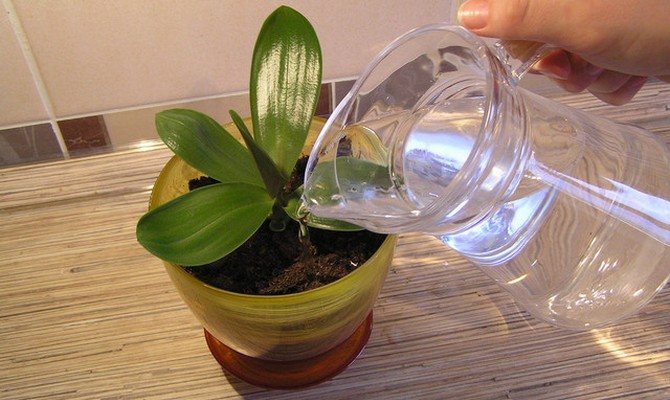

Watering flowers with settled water
Many people replace tap water with distilled water, considering it softer and of better quality for proper watering. Although this water is less hard, filtration loses most of the trace elements necessary for the normal development of the plant. Therefore, it is not recommended to use it separately. It is better to use it together with tap water, mixing 1-3 parts of the filtered liquid with one part of ordinary water.
Alternatively, houseplants can be watered with melt water from the refrigerator, which is free of heavy salt impurities. Before watering indoor flowers with such water, it must be poured into a container and placed in the freezer for a while.The upper unfrozen part will contain the largest amount of heavy impurities, we drain it, and we give the frozen part time to melt and warm up to room temperature, after which we use it for watering.
Until recently, rainwater was considered the best liquid for watering indoor crops. Due to the large burst of radiation and the release of harmful impurities, especially in industrial cities, this statement cannot be called true. However, if you live outside the city and are fenced off from the industry, you can take note of this option. According to experts, this water does not oxidize the soil and promotes the active growth of flowering plants. Begonias, chrysanthemums, pelargoniums and cyclamens react especially well to rainwater, it gives their flowers a brighter shade. If rainwater is scarce, it can be combined with tap water.
Remember, collecting water for irrigation after a long drought is not recommended. In addition, if it is raining heavily outside, do not rush to substitute the buckets. Wait 20-30 minutes. In a private house, many people prefer to use spring or well water for irrigation. Remember that, like any groundwater, such a liquid will be quite hard with an admixture of heavy salts.
Humidification specifics
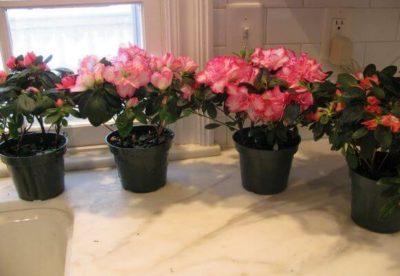

Watering is a forced moistening of the soil layer with the root system of the plant for supply with minerals and oxygen. This is necessary to generate the energy required for growth.
Watering an azalea bush has its own specifics and is one of the criteria for growth and flowering at home after buying a plant. When watering, you just need to apply the rule:
- the lower the ambient temperature, the less often watering;
- at high temperatures and low humidity, the frequency of watering increases.
Watering orchids
Although it is best for watering orchids, in principle, as for other plants, rain and settled water is suitable. It is less rigid and "clogged" with impurities.
Sometimes, distilled water is also used for watering orchids, but in this case, the flowers need to be additionally nourished with useful substances.
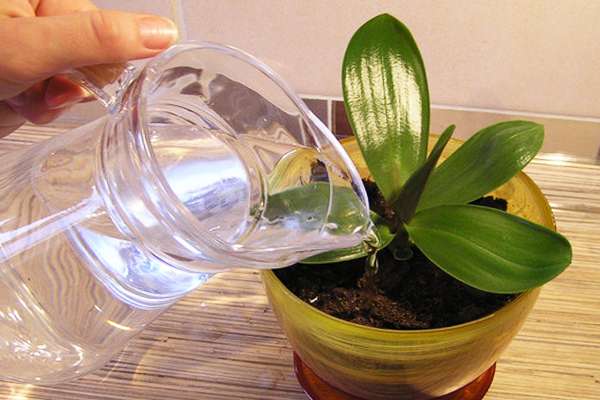

During the flowering of orchids
During flowering, watering orchids is somewhat different from the usual regime. Flowers need to be watered not only with the correct quality, but also with the correct temperature.
The temperature should be slightly higher than room temperature, but not more than 40 ° C. In addition, during flowering, the orchid needs to be watered more often, but in no case should it be flooded.
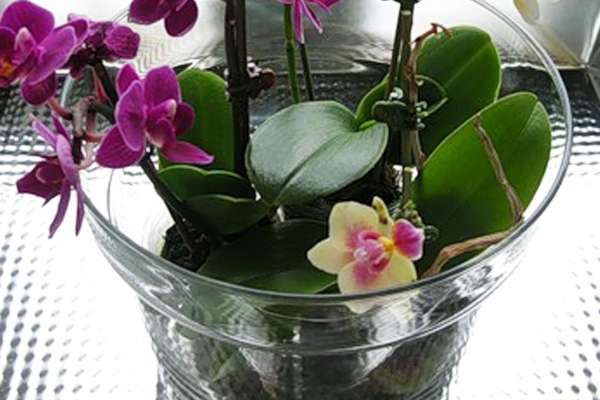

All other types of water, such as: river water, from an air conditioner, well and tap water (if it is not settled) are not suitable for watering orchids.
It is always important to remember that the blooming future of the house plant will depend on the choice of water. Therefore, watering flowers is an important stage in growing an indoor green-eyed pet. Do not forget about the advice we have given - and may your indoor flowers always be full of beauty and a healthy look.
Free book “Orchids. A Practical Guide "Book" Home First Aid Kit for Orchids "
24.09.14
Nadezhda Galinskaya
Any water for watering home flowers (and for drinking) better defend... The soil will become less alkaline and plants, especially exotic plants from the tropics (azaleas, dracaena, lemons, orchids) will become more vigorous and will stop being capricious. River, spring, rain and melt water it is not always clean, it is not rare with admixtures of toxic substances. Bottled and boiled water, although it contains fewer dissolved minerals and does not saline the earth like ordinary tap water, is dead liquid with a destroyed structure and low oxygen content. To saturate with air and restore bioenergy, they also need to be defended for 0.5-3 hours. Drinking water from a tap or well is most suitable for watering indoor plants. Well water defend 6-12 hours, but not more than 1 day.During this time, part of the mineral salts will precipitate or concentrate in the lower part of the vessel with water. Such settled water is not used all to a drop, but only the upper part (2/3 or ½ of the water volume). Tap water it is necessary to stand for at least 3 hours in an open vessel with a wide top in order for chlorine or ozone to evaporate (if the water is ozonized). The narrower the vessel, the longer it will take. If the hardness of tap water is high, a sediment forms on the bottom of the dishes during settling, which is poured out after watering. By the way, freshly split flint stone perfectly attracts any suspended matter and promotes their precipitation. It is not necessary to lag behind the water for more than 2 days. It may deteriorate or bloom. When watering in winter and autumn, if the water is cold, add boiling water so that the water temperature becomes 3-4 degrees higher than in the room. Read more How and why water is defended
plant needs
Irrigation water is essential for the development and growth of indoor plants. All nutrients necessary for this, which are in the soil, are available to plants only when dissolved in water. The quality of the water affects how these substances are dissolved and then absorbed by the roots.
In addition, the water itself contains mineral salts dissolved in it, which play an important role in the life of plants.
What kind of water is suitable for watering indoor plants? Tap water
Suitable for most indoor plants, but with some caveats. In order for chlorine, which is added for disinfection, to evaporate, the water must be defended in an open vessel for one or more days. Especially small and delicate plants need it.
The second caveat concerns the hardness of the tap water. It has different indicators depending on the region, so it is impossible to give universal recommendations about using it for irrigation. Surely you know whether your tap water is soft or hard. But in any case, for acquaintance, be sure to read the section "Why is it undesirable to water with hard water?" and "How to soften the water?"
You can also recommend sprinkling with tap water that has been cleaned with a household filter or obtained while defrosting the refrigerator.
Melted water from the refrigerator
It is devoid of excess salts, but its preparation will take some time. Pour water into a container, place in the freezer. Watch when part of the water freezes, and part is still in a liquid state. Unfrozen water must be drained - it will contain the largest amount of salts dissolved in the water. Let the frozen water melt and warm to room temperature. Use it for watering.
Spring and well
Like other subsoil water, it is often very hard, contains a lot of salts and requires softening.
River water and rain (snow) water
It is considered the best for watering indoor plants. It does not salt the ground and accelerates plant growth.
It is noticed that from irrigation with such water cyclamens, chrysanthemums, begonias, primroses, pelargoniums and other indoor plants bloom more abundantly and longer. Their color of flowers, as a rule, is brighter.
You can use a mixture of settled tap water and rain (snow) water.
Be sure to keep in mind that rainwater can be polluted, especially if you live in an industrial area. In this case, the rainwater should not be collected immediately, but several minutes after the rain starts.
Why is distilled water not suitable for irrigation?
Distilled water is completely devoid of all trace elements, which in small quantities are vital for plants. It is best to use a mixture of distilled water (1 to 3 parts) and tap water (1 part).
Why is it undesirable to water with hard water?
If the irrigation water is too hard (tap, spring, well), the pH of the soil changes towards alkalization.This leads to a disruption in the absorption of phosphorus, iron, manganese, boron and other important elements by plants.
The high content of calcium and magnesium salts in water leads to the fact that these elements are converted into compounds inaccessible to plants, the absorption of iron, which is necessary for photosynthesis, is blocked. Indoor plants fall ill with chlorosis - the leaves brighten, then turn yellow and die off. The soil can give off an unpleasant putrid or sour smell, which indicates root rot. In this case, be sure to transplant the plant into a different soil, removing the rotten roots.
Watering with hard water also results in the formation of a white crust on the surface of the soil and white streaks on the walls of ceramic pots.
Hard water is especially harmful for aroids, ferns, camellias, orchids and azaleas.
How to soften water?
To soften and acidify water, use the following compositions:
- 0.1-0.2 g of oxalic acid per 1 liter of water;
- 3 g of wood ash per 1 liter of water;
- 2-3 drops of 9% acetic acid per 1 liter of water;
- 0.3-0.4 g of citric acid per 1 liter of water;
- 0.1 ml of sulfuric acid per 1 liter of water;
- a few drops of lemon juice in 1 liter of water;
- 10-20 g of peat per 1 liter of water (put peat in a cloth bag, place in a container with water and stand for 12-24 hours).
You can soften the water by boiling it. But in this case, the water is completely deprived of the air dissolved in it. This can lead to decay of the roots of some plants. Therefore, we advise you to observe indoor plants and, using our recommendations, determine empirically which water suits him best.
What should be the temperature of the water?
The water for irrigation should not be too cold. In this case, it can cause rotting of roots and stems, falling off buds and leaves, because root hairs practically cease to absorb moisture.
The optimum water temperature for irrigation is the ambient temperature or 2-7 ° C higher. Heated water is necessary primarily for all tropical plants and cacti. It has been found that it accelerates the flowering of gloxinia, hippeastrum, amaryllis, pelargonium, hydrangea and other flowers.
It is unacceptable to water plants that are dormant in cool rooms with warm water.
Houseplants are like children, each with its own character and mood. One loves to be often turned around its axis, the other, on the contrary, - try, rearrange it from place to place - the bud will fall off without blooming.
But from an excess or lack of moisture, green favorites in different ways, but everyone is capricious: either with restrained drooping leaves, then desperately dying.
Any florist knows that it is not worth watering the flowers with instant tap water, it contains harmful substances used by our domestic industry for disinfection. Therefore, you should pour water into a container and let it settle for several hours, days. It is undesirable to water with cold water, because plants are shocked, heat-loving indoor plants may die due to root rot. It is necessary to take room temperature or 1-2 degrees higher.
It is also not recommended to water with boiled water - it is "dead" and does not have dissolved air, microelements. There will be no harm, but also no benefit. As for rain or melt water, it has always been considered optimal for irrigation. But now it is necessary to make allowances for the state of the environment. If you live far from industrial plants or major highways, precipitation water can be beneficial for plants. In megacities with such water, it is better not to risk it. The same applies to river or well water.
In today's environmental conditions, it is preferable to water indoor flowers with artesian drinking water, but not mineral water.
Experienced gardeners advise using aquarium water for irrigation, and if you take its bottom layer, you can combine watering with top dressing, since silt has always been a good fertilizer. But it is worth remembering that you will get beautiful, juicy leaves on flowers, but they may refuse to bloom - and there should be a measure in the fertilizer. After all, if there are a lot of fish and little vegetation in the aquarium, there will be an excess of nitrogen in the water.
Talking about water, you need to seriously focus on the hardness of the water. Hardness is the capacity of calcium and magnesium salts per unit volume of water, expressed in meq / l.
Determine:
- soft - up to 3 mg-eq / l
- medium hardness - 3-6 mg-eq / l
- hard - more than 6 mg-eq / l
- very hard - over 9 meq / l
Watering with hard water has a harmful effect on plants, namely:
- the accumulation of calcium and magnesium salts changes the acidity of the soil towards an alkaline reaction - camellias, azaleas, ferns that prefer acidified soil die;
- difficulty in the normal absorption of necessary nutrients by plants;
- reduction of resistance to non-infectious diseases - spots, dry and wet rot.
How to soften the water for bathing a child
Hard water can irritate your baby's delicate skin. To prevent this from happening, bathing water can be:
- boil for 15–20 minutes;
- soften with a decoction of chamomile or a string (2 tablespoons of chopped herbs per 1 liter of water);
- eliminate hardness with potato starch (200-300 g) or baking soda (tablespoon per liter of water);
- add a decoction of flax seeds to the washing water (4–5 teaspoons per liter of water);
- dilute sea or table salt in a bath (10 grams per 1 liter of water).
The listed funds will help to reduce the hardness of tap water, neutralize metals and harmful impurities.
Did you like the article? Was she helpful?
Watering rules with tea leaves
Tea leaves are the best way out in situations where it is not possible to buy minerals for soil enrichment. Water flowers only with tea leaves that are weakly brewed, not strong.
Never use a tea infuser with added sugar, and remember to water it about once or twice every two weeks.
Tea leaves are beneficial for such types of indoor flowers as geraniums, violets, they grow quickly, and they constantly need useful nutrients.
Frequently asked questions: About watering
1. What kind of water to water? How to soften water? Available means? Can I boil it? And who uses filters, is there any benefit?
Answer:
You can filter the water with a filter containing ion exchange resins or osmotic membranes, the result is excellent. But the process is long, and when it is necessary to filter 15-20 liters in order to water all the flowers, then it is simply painful. Plus - you regularly need to buy new filter cassettes, which, with intensive use, become clogged in a month and a half.
Boiling water is also effective and also dreary. In addition, boiling removes air from the water, which is not good for plants (the amount of dissolved oxygen is so small that it has no effect on the plant, unless, of course, it is flooded). It is good to water with snow water, although, of course, it also turns out to be a dreary thing: the volume of snow is large, but little water is obtained. In addition, in the city a lot of burning and mud settle on the snow, it is better to collect in the forest away from the tracks, which in itself is not always feasible.
In stores you can find a "decalcifier", that is, "a special agent for neutralizing water hardness." As they write in the annotation, "binds calcium and magnesium salts (causing water hardness), softening water for watering plants." 500 ml - 85 RUB Most likely this is a solution of sodium EDTA salt, in any case, EDTA (Trilon B) can be used on the farm as an antiscale, but calcium dissolves into a complex, but does not disappear.
About watering with cold "hot water".It is true that softeners and inhibitors are often added to hot water from thermal power plants and from boilers. However, this water circulates in a closed cycle and does not enter the water supply system. Through a heat exchanger, it heats ordinary cold tap water, which flows from the tap in a hot state. Those. hot tap water has the same chemical composition as cold water. But there are two differences.
First: hot tap water is most often softer and contains less dissolved gases, since the solubility of hardness salts and gases decreases with increasing temperature.
Second: the solubility of everything else increases with increasing temperature. So if the hot water supply system is very old or, on the contrary, completely new, then hot water may be more "rusty" because it will dissolve iron salts that are present in old and completely new pipes. In addition, hot water can sometimes have an unpleasant aftertaste that it gets from the plastic and rubber parts of the plumbing system (this is almost never the case in residential buildings). This taste has no effect on the chemical composition of the water.
Output: in the overwhelming majority of cases, if you live in a normal residential building, and your hot water is not rusty, it is better to defend it for watering. You can ignore the aftertaste, if any.
Freezing water in a freezer can only have a beneficial effect on water softening when it is properly frozen. If you just freeze the water, then all the salts are part of the ice, and when thawed, they again fall into the water. To obtain melt water, you must first, by freezing the water, follow the process. Water does not freeze immediately, some water remains, which then also freezes, but it is this water that does not freeze immediately, which is a saturated saline solution, which has a lower freezing point. If you manage to drain this unfrozen solution, then the melted ice will give melted, soft water. Otherwise, freezing is meaningless. Another thing is that there are different cities and ecology too. If someone's gorodokanal is messing around, then there is no need to argue, it will turn out pointlessly. Hot water is not chlorinated. This is pointless because it undergoes intensive boiling in boiler rooms, on the walls of the boilers of which, by the way, harmful magnesium and calcium salts remain.
The only reliable cold water softener is the addition of oxalic and some other acids to control acidity. But we still have to defend against chlorine.
2. Can you really water flowers with mineral water? it contains the minerals that flowers need, but in smaller quantities than in mineral fertilizers, besides there is oxygen.
Answer:
First, where does the oxygen come from? There is carbon dioxide there, but there is hardly more oxygen than in ordinary water.
And most importantly, the composition of mineral (not drinking, but medicinal mineral) waters is very different. There are ferruginous waters, there are sulphurous ones. A certain balance of microelements is important for plants. It is micro, since there is not enough nitrogen and phosphorus in mineral water, this is not a slurry.
Second: why? There are many fertilizers for indoor plants on sale. There are microelement complexes, for example, "Cocktail". Why reinvent the wheel? Saving will not work out of this either: diluting liquid fertilizer, we get much more solution than you can buy mineral water with this money. What's the point?
This is entertainment for the lazy. Poor tap water is really a problem, but then you need to water it not with mineral water, but with drinking water. For example, the one that is sold in five-liter plastic bottles. Or the one in 20-liter office water bottles (this is really soft water, since the method of ion exchange resins or osmosis is used for cleaning).
3. How to acidify water?
Answer:
It is possible to acidify with citric acid, i.e. it gives the effect.Here is a person with 15 years (!) Experience in growing bonsai directly advises: “3-4g per 10 liters, or, if funds allow, ascorbic acid”. Whether acidification is NEEDED depends on the species characteristics of the plant; some need it, others don't. For example, many orchids need this.
4. Do plants need iron?
Answer:
Everyone needs iron, like other trace elements, copper, cobalt, molybdenum, zinc. Moreover, iron can exist in different forms, bivalent and trivalent. Plants mostly need bivalent.
5. Is it possible or impossible to water the plants with boiled water?
Answer:
It is necessary to look at what will cause more harm to this particular plant growing in this particular pot in this particular soil - from watering with unboiled water (hard, chlorinated, etc.), or from watering boiled water (there is no air, the hardness decreases, but maybe not quite, etc.). There are plants that are very sensitive to calcium salts. There are plants, on the contrary, that love calcium. There are other plants. There are other methods of water softening. In general, how does hard water harm? The fact that the soil is quickly salinized. The same result can be “achieved” by too and inept frequent feeding. Each grower has his own opinion on this matter, due to the fact that more is available to him. You have to watch how the plant reacts and act accordingly.
How to soften water for irrigation
There are many ways. The easiest for home use are as follows:
- charcoal is added to the water to be defended at the rate of 3 g per 1 liter of water (oak and chestnut wood cannot be used to obtain coal);
- a fabric bag filled with 100 g of fresh peat is placed in a 10-liter container for a day - then you can even wash your hair with such water.
If the domestic plumbing system is equipped with a filter for purifying drinking water, the problem of hardness is removed, usually filtration frees the water from calcium and magnesium salts.
There is also a chemical method for softening water, oxalic acid is often used with this method, but there is a serious nuance - it is necessary to know exactly the number of water hardness - otherwise the slightest imbalance will cause an undesirable reaction of indoor plants. You can buy a digital hardness tester at your flower or online store.
Step-by-step instruction
Required temperature
The optimum water temperature for irrigation should be the same as the ambient temperature or 2-3 degrees higher. Watering the azalea with ice water will stress the flower.
IMPORTANT. Experienced flower growers advise to put snow or ice on the pallet in high heat and low humidity.
How often?
The timing of watering the azalea bush depends on:
- from seasonality - winter, summer;
- on the ambient temperature;
- from humidity in the room.
To correctly determine the watering time, you can be guided by the following techniques:
- Take a pinch of top soil from the pot and rub it between your fingers. If the soil layer is dry and crumbling, water should be used.
- Immerse your finger in the ground two centimeters and decide. If your finger is dry, it's time to water; if your fingertip is wet, it's too early to water.
Dosage
There is no strict dosage of the liquid to be watered. Everyone regulates himself. But it is necessary to follow the generally accepted rules for watering azalea bushes.
- do not flood the plant;
- do not be late with watering;
- in cold weather, water less often and less;
- in roast - more often and more abundantly.
Methods: bottom to pallet or top?
How to water the azalea correctly: pouring water directly into the pot or into the tray from above, and what is the watering temperature needed? Watering the azalea bush is carried out in several ways:
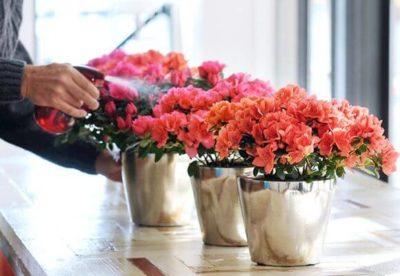

Top (preferably from a watering can with a thin, long spout and small spray holes). This method is used when the topsoil is 2-3 centimeters dry.- Through the pallet (a flower with a pot is placed in a pallet with poured water, the drainage holes of the pot are one centimeter in water.The soil naturally draws in water. The next watering after such a procedure is not earlier than three days later).
- Immersion of the whole pot in a container of water until the clod of earth is completely saturated with moisture (mainly concerns purchased flowers with a dry clod). This is rarely done - once a week. For better acclimatization of such a plant, you can add Zircon to the water.
REFERENCE. Zircon is a drug that is at the same time a regulator of root formation, growth and flowering. Zircon allows the plant to more easily endure stress when exposed to one or another chemical, biological and physical nature; it is also an inducer of disease resistance.
Top dressing
It is advisable to combine plant nutrition with watering azalea bushes. For the convenience of florists, ready-made solutions are sold in flower shops in convenient packaging. They have descriptions and instructions for use.
The following drugs show good results:
- "Superphosphate".
- "Azalea".
- "Uniflor Bud".
- Kemira Lux.
Watering with fertilizers is carried out from spring until bud formation every 15 days. In the spring, nitrogen is introduced, in the summer, potassium. In November, when the buds are laid, it is recommended to apply phosphorus fertilizers. For example, superphosphate at the rate of 15g per 10 liters of water.
You can learn more about dressing for azaleas at home, about the process of fertilizing a plant and other nuances from our article.
What kind of water do you need?
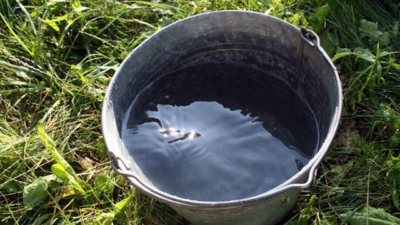

It is important and correct to choose the water with which the azalea will be irrigated. Hard and chlorinated water will not work for this.
Use soft water. It is advisable to insist on it for two days before watering. You can also use boiled room temperature. To soften the water for irrigation, lemon juice or oxalic acid is added to it.
In addition, rainwater is ideal for watering rhododendron. It should be cleaned with household filters or insisted for four days.
Is it possible to water flowers with tea leaves and tea
Chemical analysis of tea shows: tannins, potassium, manganese, iron.
Disputes of members of the forum about the benefits of brewing as a fertilizer do not subside.
- the acidity of the substrate increases;
- air penetrates better into the ground;
- compost is activated;
- loosened clay soils;
- mulching retains moisture.
- there is a sufficient selection of universal fertilizers in service with flower growers to use dubious ones;
- flavored additives upset the balance of the soil;
- from a sweet drink, pests start up: mushroom gnats, midges;
- moldy welding brings bacteria and fungi into the ground;
- the soil turns sour.
Good to know! Soil acidification is determined by a green bloom with an unpleasant odor, mold on the stems. Measures are taken: they saturate the earth with oxygen, loosen it, prevent water from stagnating in pots.
Going on vacation, the indoor greenhouse is left on auto-irrigation. Use: plastic bottles, capillary mats, wick irrigation, ceramic cones.
The health of home greenhouse pets depends on watering. Use a soft, settled liquid at room temperature. The aquarium is not often taken, the whey is diluted, they are not fond of brewing. It is forbidden to use beer with preservatives, distilled water, from a well, lake, air conditioner. Gases are released from the mineral water.
Irrigation types
Abundant watering carried out immediately after the topsoil has dried. Excess moisture accumulated on the pallet after watering is drained. Tropical plants need abundant watering, for example, fittonia, begonia, monstera, heliotrope, as well as ivy.
Moderate - watered 1-3 days after the earthen coma dries. The top layer should dry 2-3 cm. Suitable for bulbs, plants with strongly pubescent stems, leaves, fleshy leaves, thick roots, with tubers on the roots. These include dracaena, asparagus, arrowroot, columnea, geranium, zygocactus, orchids.
Rare - watered as the earthen coma dries up by 2/3 or as the soil dries up completely (applies to some types of drought-resistant plants, for example, cacti), every few weeks, months. Rare watering is suitable for succulents, such as cacti, as well as flowers with a pronounced dormant period, such as clivia, gloxinia, krinuma.
Indoor flowers do not care, they do not depend as much on temperature changes as on street flowers. I water when there is time, and some of the flowers themselves remind by their appearance that they want to drink, for example, in passionflower the leaves droop from lack of moisture, and then quickly straighten out if watered.
Water selection criteria for watering home flowers
Not every water that is watered with a houseplant has a beneficial effect on it. Therefore, quite often there are cases when, after prolonged watering, a seemingly healthy young plant begins to turn yellow, wither, or even disappear altogether. With what this is connected, many may not even guess right away. But it's all about the water.
It is imperative to water indoor flowers with water at approximately room temperature, with a minimum amount of harmful impurities, and of course, with a neutral pH level. It is by these 3 criteria that the suitability of water for irrigating home flowers is determined. Let's talk about each point in more detail.
Water temperature
Why is it so important to water indoor flowers with water at a certain temperature? The answer is simple - fragrant indoor plants may simply not tolerate cold showers or warm watering, especially if the flowers are overly sensitive. Therefore, it is very important to keep the water at room temperature. It is ideal for watering indoor plants.
Whatever water you take: tap water, rainwater, etc., the rules of the temperature regime must be adhered to. Otherwise, if you water the flowers with cold water, the roots of the plants will experience a certain shock, and this will adversely affect their development. The flowers will either begin to grow more slowly, or they will completely dry out and die.
Warm water is also a taboo for watering indoor plants, with the exception of some flowers, such as orchids during flowering. Therefore, do not forget to defend it and bring it to the desired temperature regime. Your plant will surely thank you for this with a flowering look and unfading beauty.
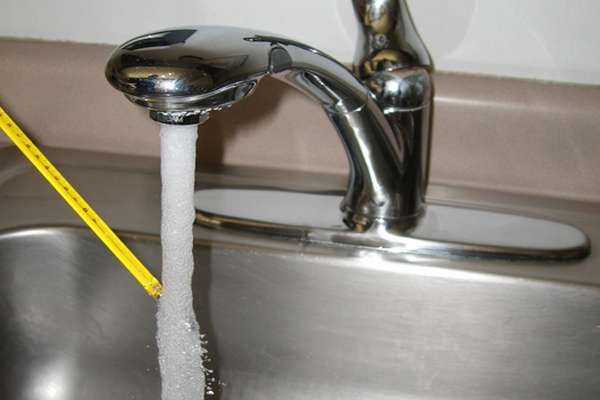

Chemical composition of water
Of no small importance when watering indoor plants is the presence of chemical impurities in the composition of the water. We are talking about chlorine, all kinds of heavy metals, etc.
These impurities are far from safe for flowers, since they settle, first of all, on the roots of plants and violate their integrity. All this leads to the premature wilting of the flower. Therefore, it is important, when choosing water, to take into account the place from which it is taken.
If you take rainwater for watering flowers, then try to take only that which was formed as a result of heavy lingering rains. If the rain was short-term, there is a high probability that the melt water contains many harmful, even poisonous, substances. This mainly applies to industrial areas and places located near highways.
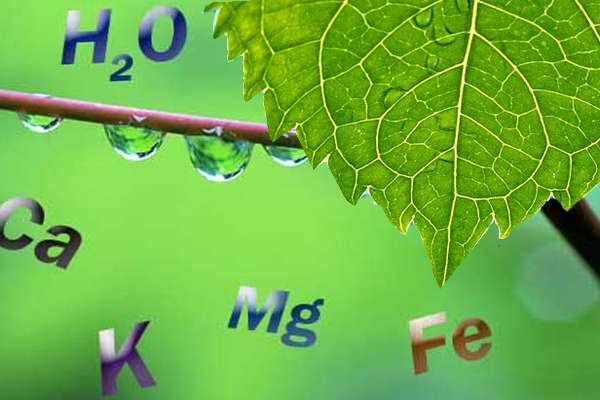

Along with such rains, harmful substances released into the atmosphere by factories and vehicles will fall. And only if the rains are prolonged, then far from the first portion of flowing water can be suitable, and most importantly, safe for indoor plants.
Particular attention should be paid to tap water. It contains chlorine - the main enemy of all life on the planet. Houseplants are no exception. When chlorine hits the root or leaf of a flower, it mercilessly kills the plant.
In addition to chlorine, tap water contains a huge amount of salts. As a rule, these are chlorides known to many, which harm the growing plant, depriving it of its vital potential.Therefore, the water from the water supply system, which will go to watering the flowers, will need to be defended or diluted. It is not worth pouring water that has just come from the tap into flower pots right away.
Hardness of water
One of the most important criteria for the selection of water is the level of its hardness. Hardness depends mainly on the presence of so-called alkalis in the water. They are often understood as dissolved carbonates, usually magnesium and calcium. And the more dissolved salts of such metals are in the water, the harder it is.
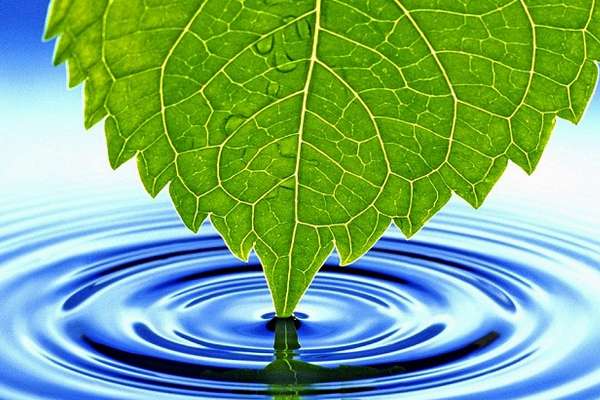

To determine the stiffness, you need to make a request to the waterworks, of course, local. Since the hardness of the water is not the same in every area. But, if it is not possible to contact the station, then you can try to determine the alkaline balance of the water yourself, at home. This can be done by looking up and down the flower pot.
As a rule, house flowers are watered with the same water for a long time, that is, either always tap, or rain, etc. If the water hardness was high, then for a long period of time during which the flowers were watered with such water, on the walls of the pot white streaks must appear. This will indicate that there is lime in the water, in an increased amount.
An equally eloquent indicator of excessive stiffness is leaf chlorosis. This is due to the fact that an overly alkaline soil environment blocks the access of nutrients directly to the plant itself. For this reason, the leaves of the flower begin to brighten at first, and then turn yellow.
If you find such frightening symptoms in your house plants, immediately transplant them into fresh soil. This will definitely help save the flowers from death.
Acidity
A very important factor in water for irrigation is its acidity level. It can be determined using litmus paper. This must be done in advance, before the start of the watering process. The increased acidity of the water has a detrimental effect on the house plant, especially if it is very sensitive. These sensitive plants include hydrangea, camellia, orchid, etc.
For each individual type of flower, there is an acceptable level of acidity in the water. If the irrigation "material" does not correspond to the norms, then it must be corrected and brought to the required parameters. To do this, you can drip simple lemon juice into the water. It will help reduce the acidity to the required level.
What to water from
For proper watering, it is advisable to get a watering can or a bucket with a fine-hole nozzle.
You can make a "watering can" for watering yourself from a plastic bottle, puncturing the holes in the lid with an awl. In general, you can water from a bottle without a lid, because the neck is narrow enough to control the jet size.


Some growers water plants from a glass, jug or other container with a spout.
Currently, modern technologists-inventors have come up with many mini-irrigation systems for an apartment or a small private house, smart and able to independently measure soil moisture and turn on the access of water to a pot for a plant that needs watering. Such a device will become a tangible assistant in the event that the owners leave or are often away on business trips.
So is it possible to water with cold water
There are several factors that affect watering:
- type of vegetable crops;
- the phase of their growth - which may be harmful for a thin sprout, it will not affect an adult plant;
- method (watering at the root or sprinkling);
- temperature of the soil and air: in a separate container in the heat, the water heats up, and then the moistening of the already hot soil is done not with warm liquid, but with boiling water.
Read also Veranda from plastic windows photo
Watering with cool liquid is, of course, possible. But, you should take into account the rules of watering.
First, irrigate the beds with cold water from a hose in this case only in the evening.
Secondly, water the crop not at the root, but in the middle of the beds, between the rows, and cover all the beds with mulch.
Crops planted in autumn and intended for wintering tolerate fresh water well.
Plants with a root system deeply embedded in the soil can be watered with a cool stream. During the time until the water reaches them, it will heat up.
You can also get rid of some pests this way.
What to add as top dressing?
To improve the growth and flowering of the plant, various preparations can be added to the water during irrigation. These include:
- "Zircon", used for root development and profuse flowering. A few drops of the product are added to the water during the azalea flowering period. You can use the drug once every four days.
- "NV-101". This drug saturates the plant with all the necessary trace elements. It is enough to add 1-2 drops of the product to the water for irrigation.
- "Eco-gel-antistress" also improves the condition of rhododendron well, especially in cases where the plant has experienced stress. It can be used for both watering and spraying.
- Ferovit - a drug with a large amount of iron. It is preferable to use it for spraying, but you can also add water for irrigation.
Read more about fertilizing azaleas here.
Features of the
During flowering
- From March to October, until the time of flowering of the azalea, (November - intensive laying of buds and buds), the watering of the bush decreases. Only in hot summer time, blooming azalea needs to be watered more often (up to two times, both in the morning and in the evening).
- To achieve an increase in flower buds, watering is limited in the autumn-winter period, the temperature is brought to 6-8 degrees (a glazed loggia, a balcony will do).
- When buds and buds of flowers appear, the temperature is increased to 16-18 degrees. Watering the azalea flower during flowering is regular, without waterlogging and without excessive dryness.
IMPORTANT. Azalea blooms for up to two months if the humidity and temperature are maintained at 12 degrees. At 20 degrees, flowering will last only two weeks.
At different times of the year
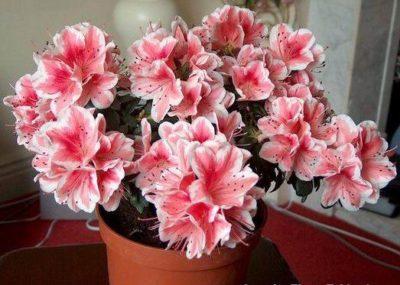

How to water a blooming azalea in winter and summer? During the year (when caring for an azalea), the volume and frequency of watering are different:
- From March to September, watering should be done every other day. In summer, when the weather is hot, it is necessary to moisturize (and additionally spray) more often - every other day, every day.
- In October and further in November, when the buds are laid, it is necessary to water less often.
- In winter, during flowering, it is necessary to water 1 - 2 times a week (with the heating batteries turned on, the temperature and dryness in the room increase, the frequency of watering increases, preferably morning spraying of the leaves).
In all cases, it is necessary to observe the measure when watering (do not fill or dry). More details about the conditions for keeping and caring for the plant in the autumn can be found here.
Indoor and outdoor
How often to water the azalea? Watering an indoor azalea bush and an outdoor azalea is slightly different... In a room where an azalea grows, it is difficult to choose a constant watering regime (the optimal conditions for keeping a flower at home can be found here). Cold - you need to reduce watering, hot - increase. Skill comes with time. The main thing is not to flood.
Watering a bush of rhododendrons (azaleas) in the garden, in the country, in the backyard plots has its own specifics. The frequency and intensity of watering is determined by the planting site and the weather. Watering is insignificant in places where the level of groundwater is high. In dry summers, watering is increased. In high areas, sandy - abundant and frequent watering is needed. The watering rate is usually 1-2 buckets two to three times a week, young seedlings are watered more often - half a bucket under a bush.
Before and after transplant
Watering the azalea bush before and after transplanting is of great importance. Any transplant of azaleas should not be carried out in winter, during flowering. This should be done when new shoots are growing. Young shoots need to be replanted every year, and adult bushes - once every three years. What is the reason for this? If the transplant is not done in a timely manner after the purchase, then the roots encircling the clod of earth can form stagnant moisture and rotting of the soil. Plus various diseases and parasites.
- It is necessary to remove the plants from the pots and place them in a container with prepared (preferably boiled) water.
- In the same place we dissolve drugs: zircon - for better root formation, antifungal - phytosporin-m.
- We stand for 0.5 - 1 hour.
- After transplanting, water with the same solution in which the bushes were soaked.
After transplanting, we water it in two to three days with the obligatory addition of growth stimulants (succinic acid, for 1 liter of water - 1 gram of acid).
ATTENTION. For the transplanted azalea to take root, a temperature of 20-22 degrees is needed (usually covered with a plastic bag), and when the roots take root, it is a good idea to put ice cubes on top of the pot. This will water (when the ice is melting) and keep the plant cool.
What is improper irrigation?
Excessive or, on the contrary, insufficient watering of the rhododendron can lead to conditions such as:
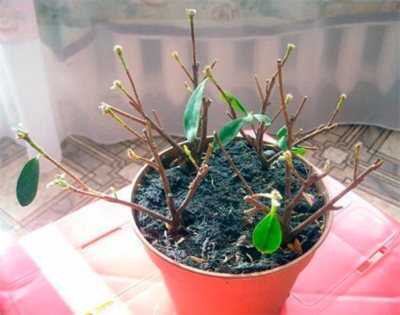

- withered stems, flowers and leaves;
- falling of buds and inflorescences;
- instability of the ground part of the plant;
- the dying off of parts of the leaves;
- deformation of the sheet plate.
Identifying improper care is not difficult. The soil lump in the pot will shrink, gaps will form between it and the walls. Dead or rotten roots begin to emerge from the drainage holes. You may also notice a moldy smell.

